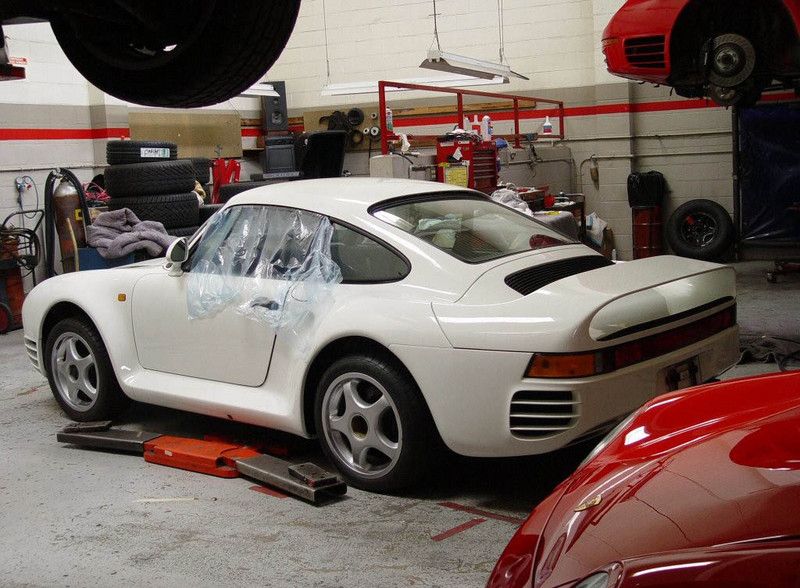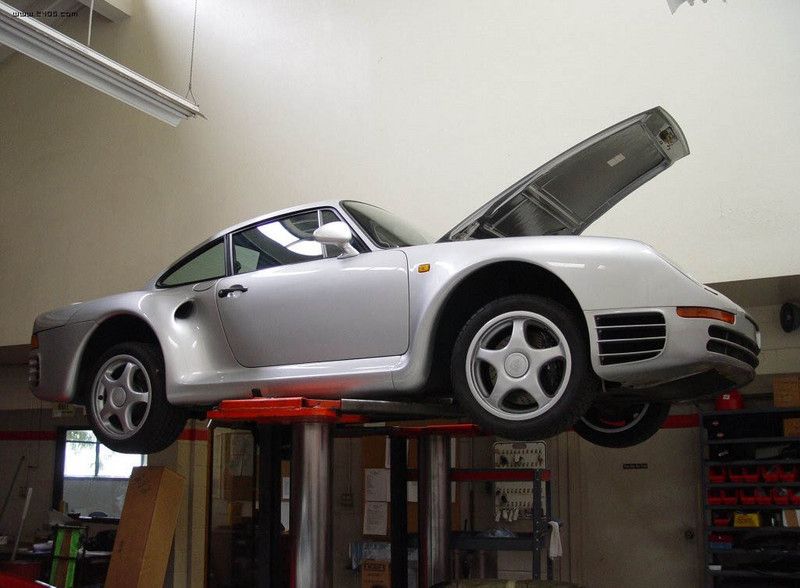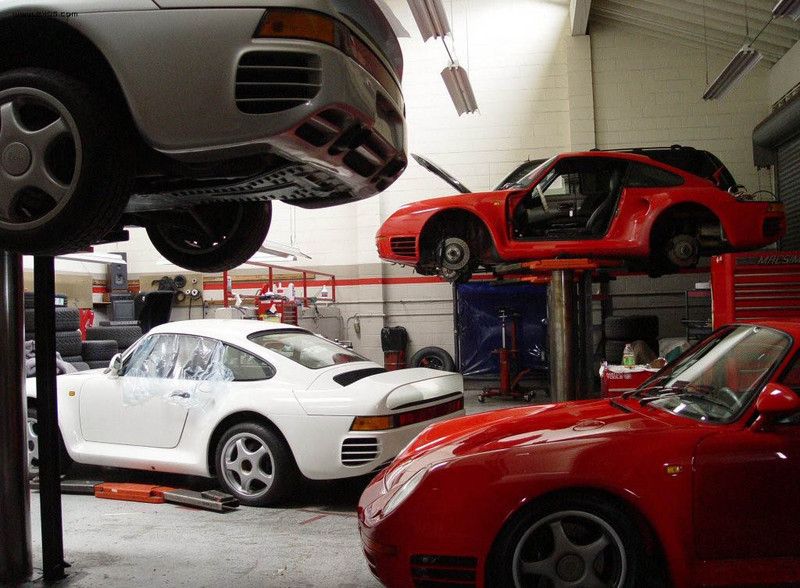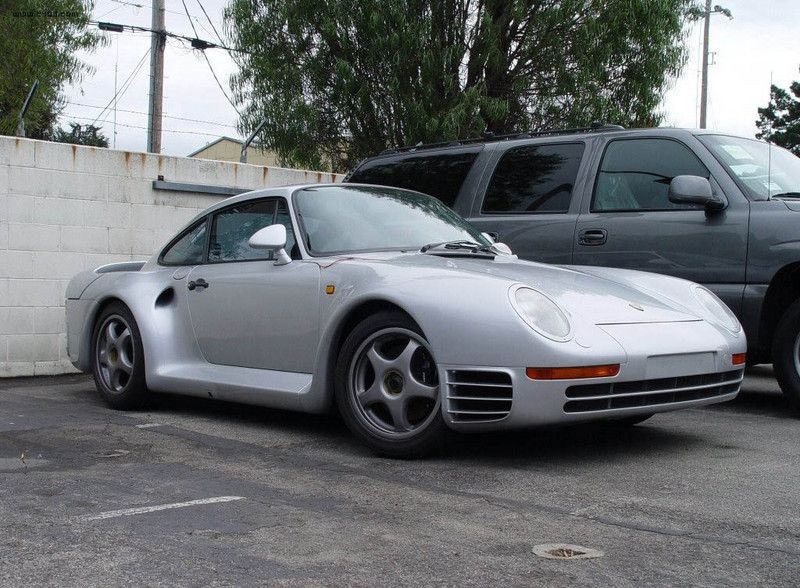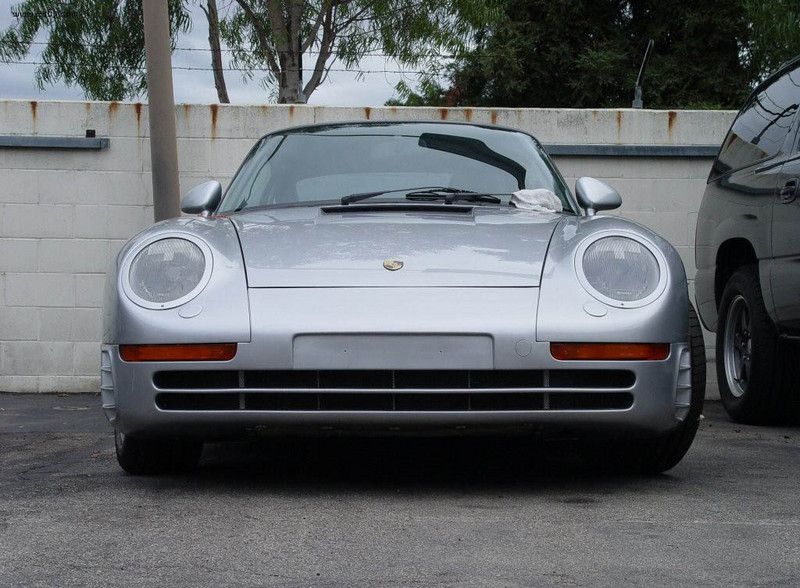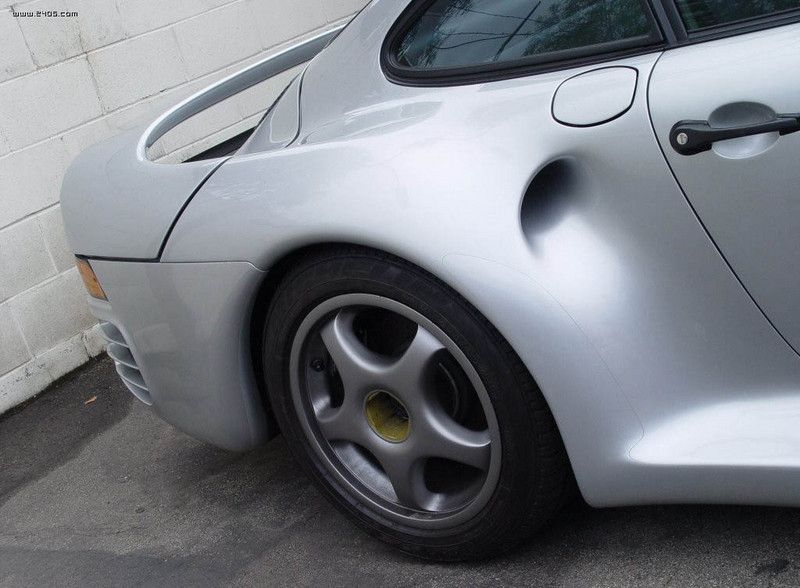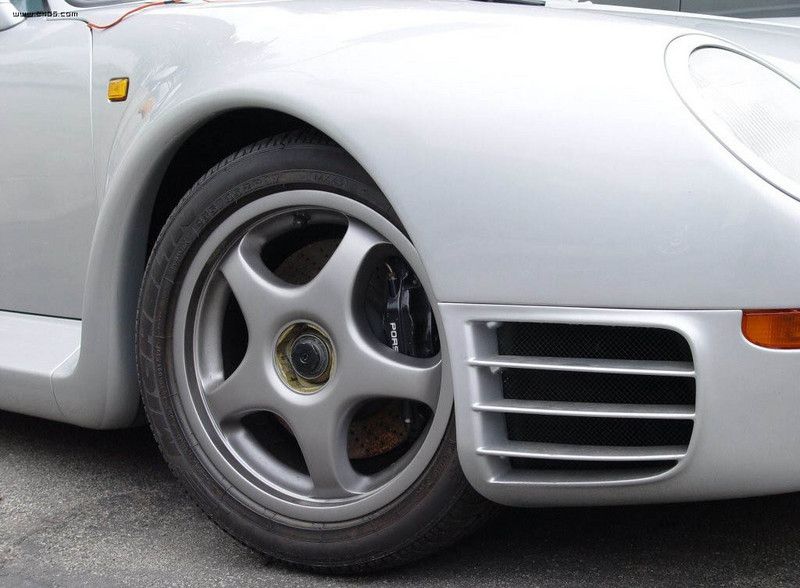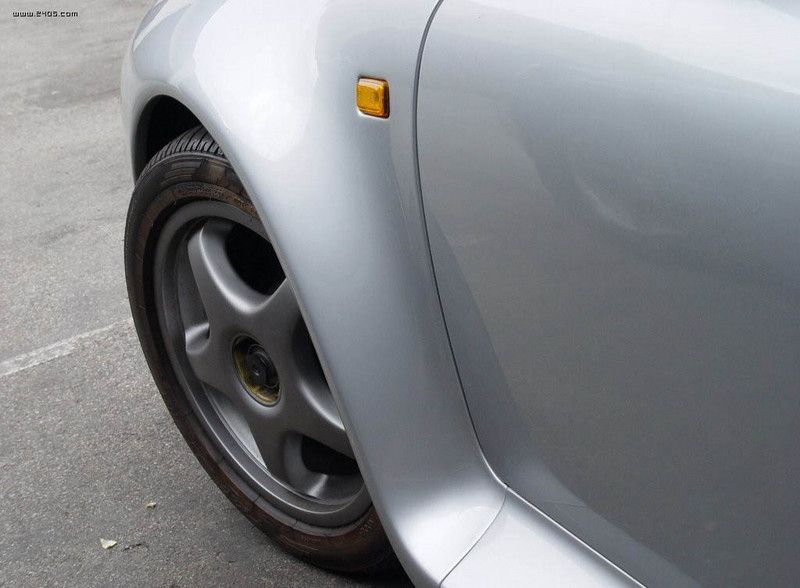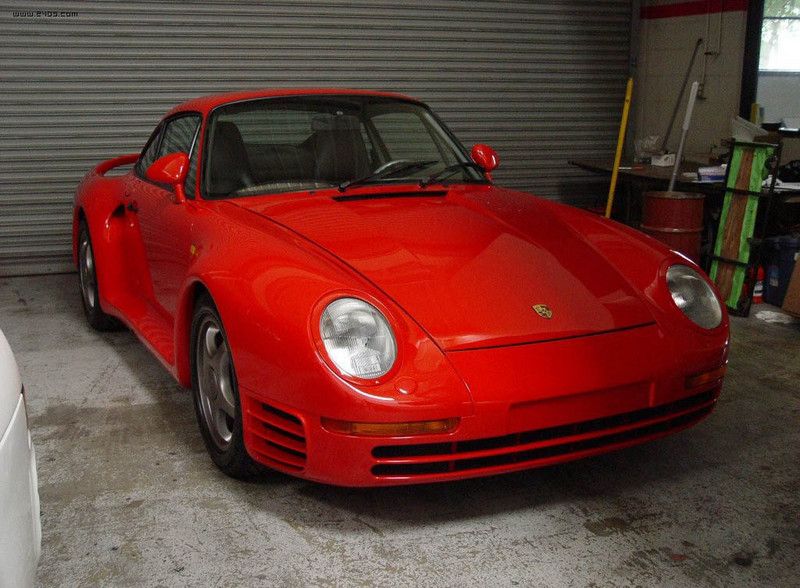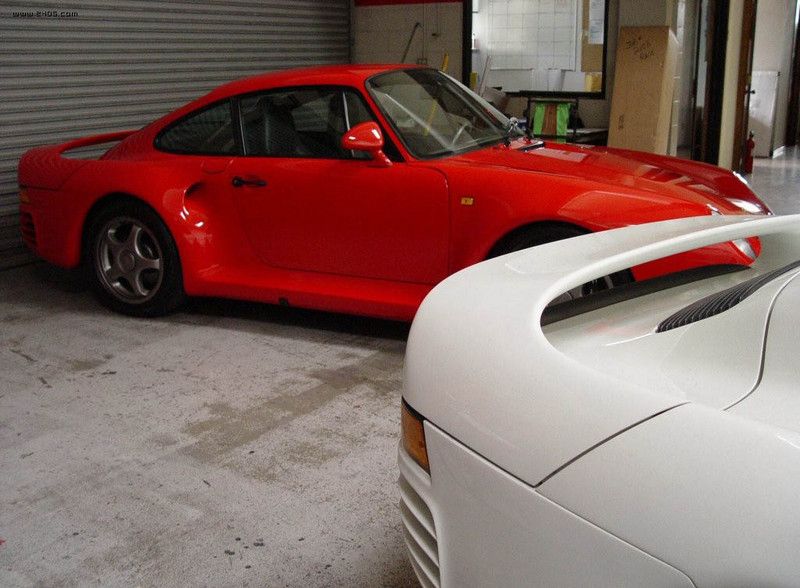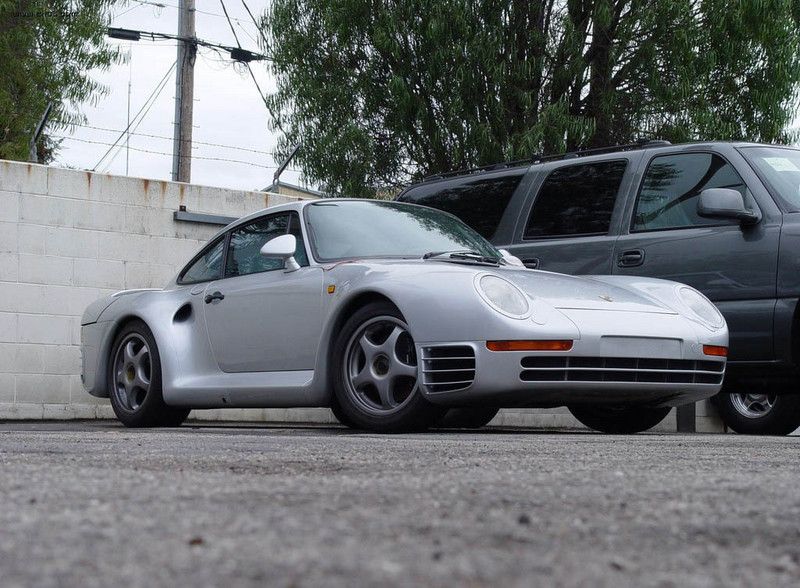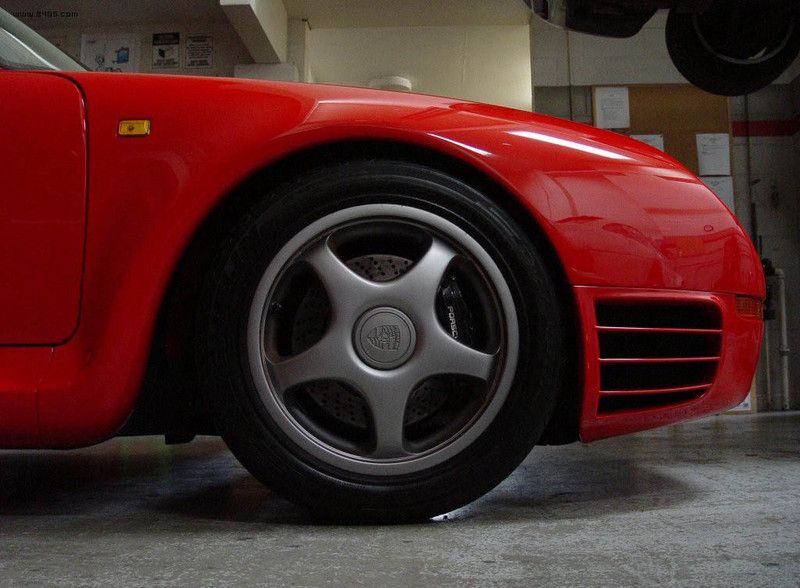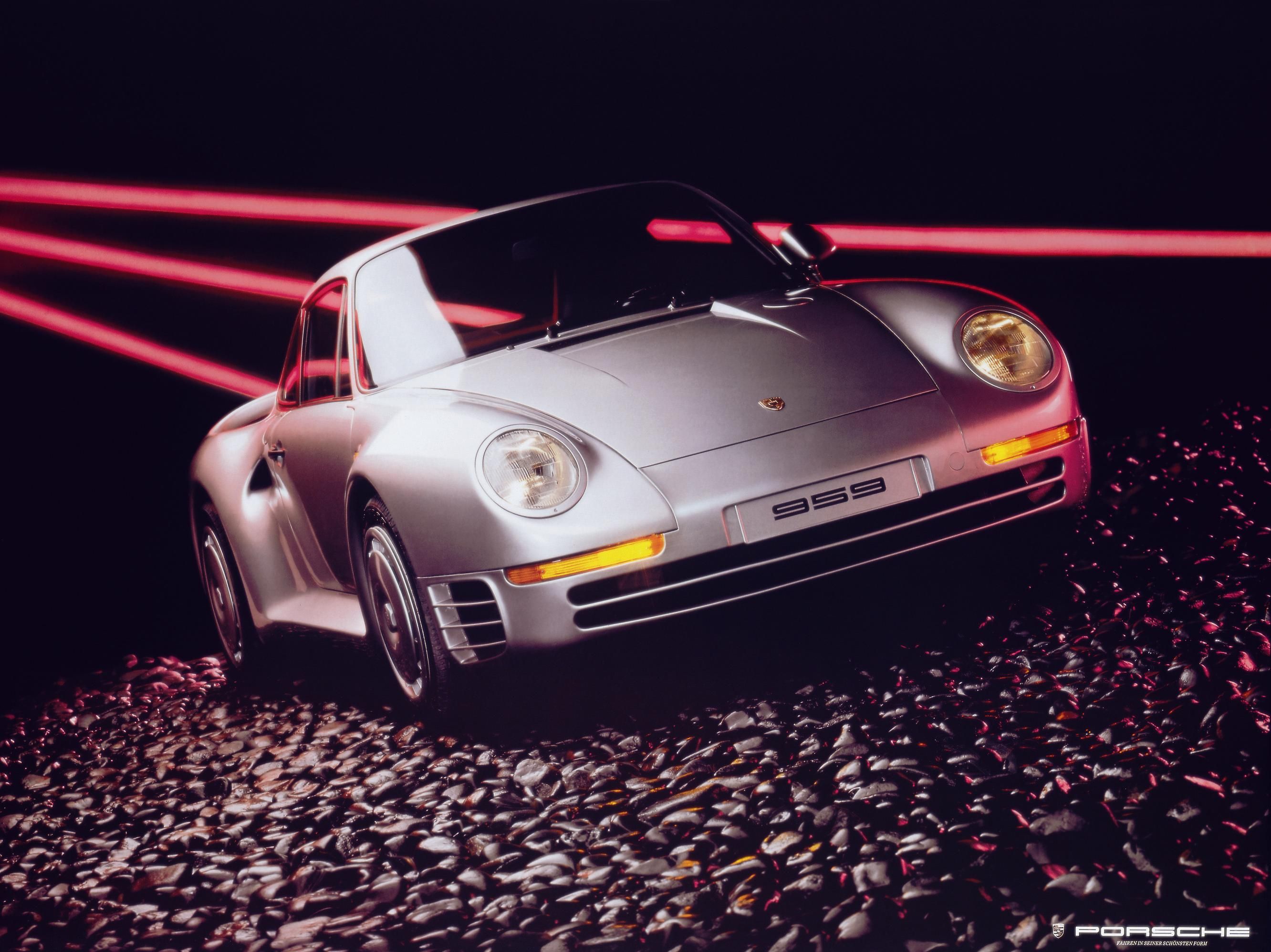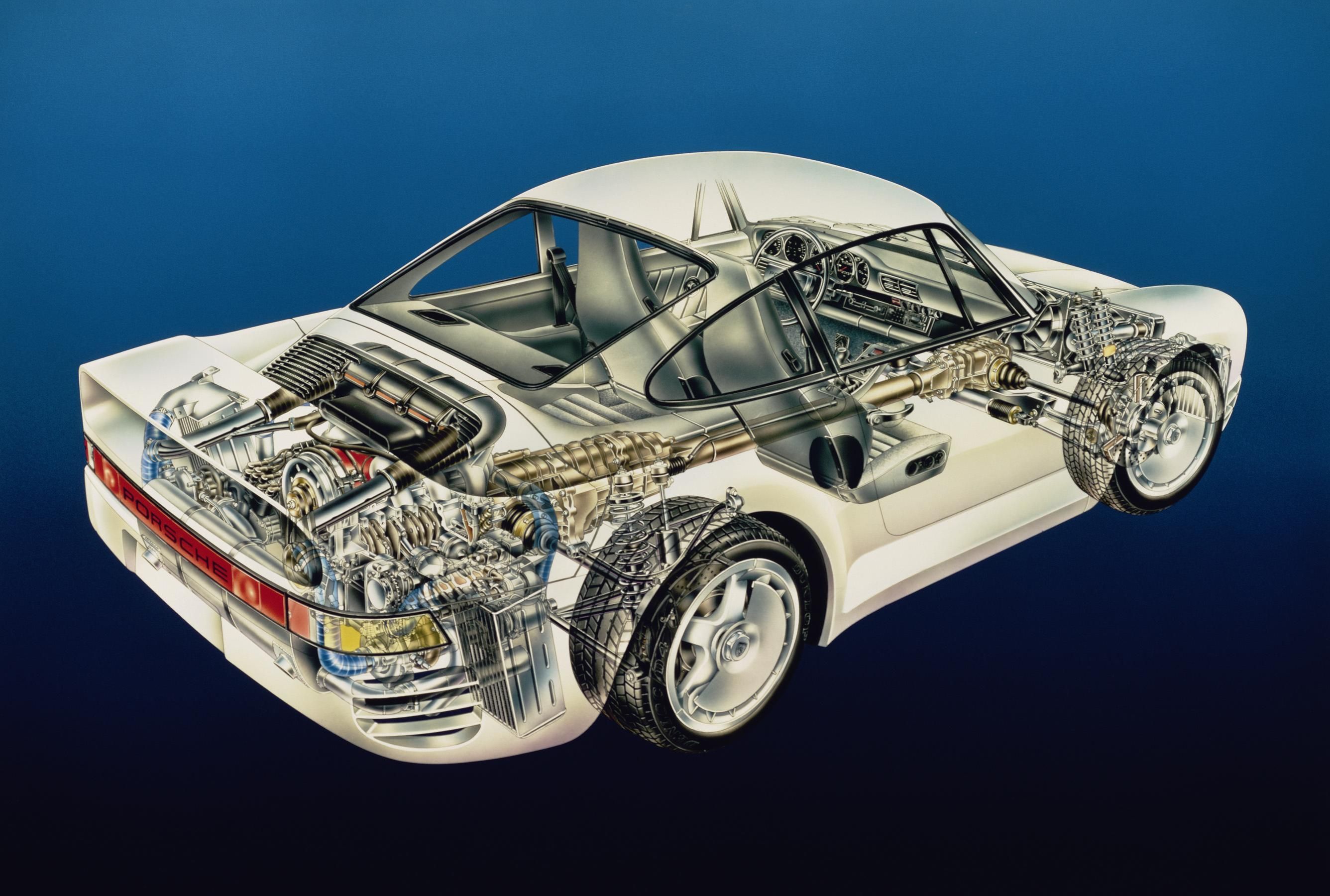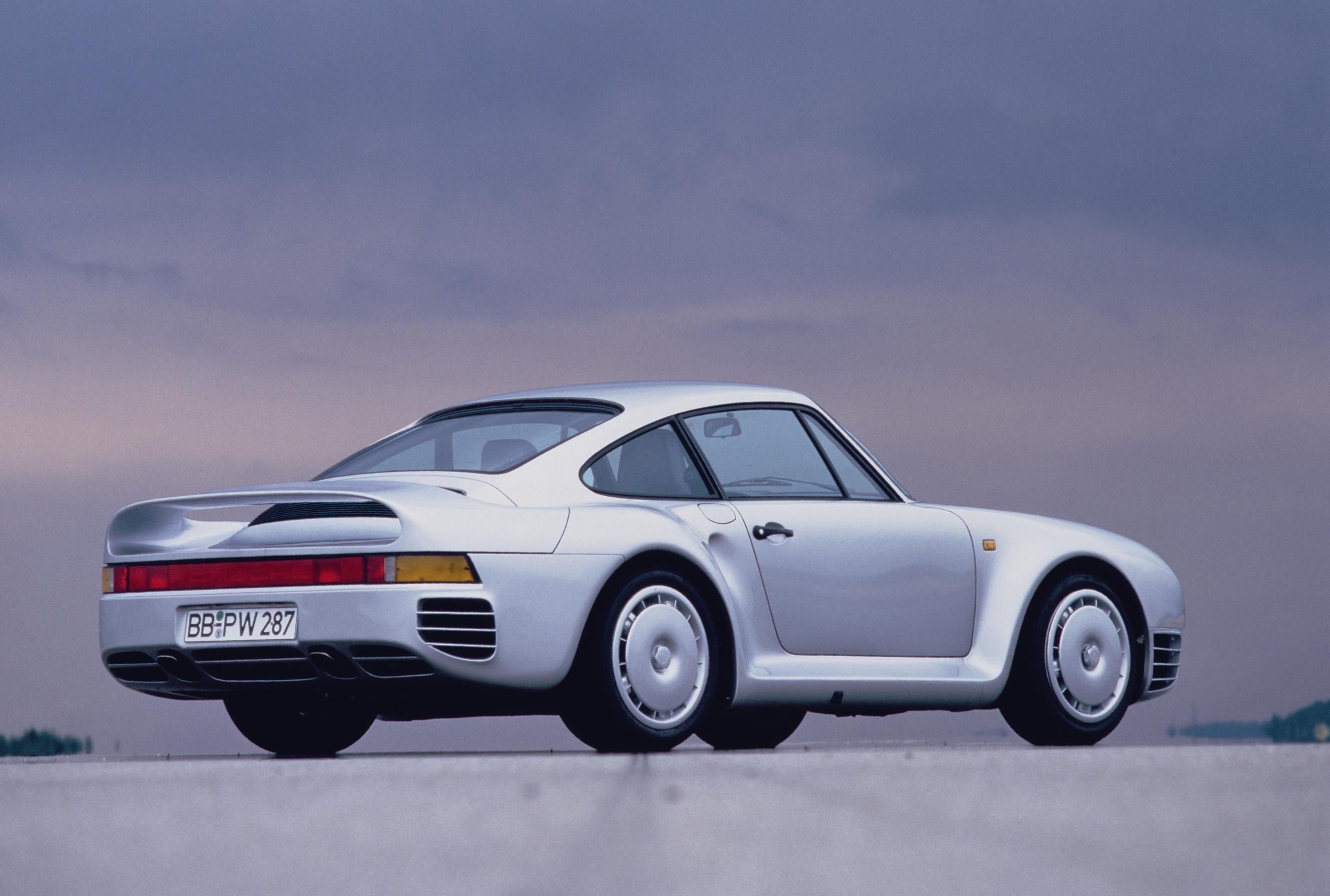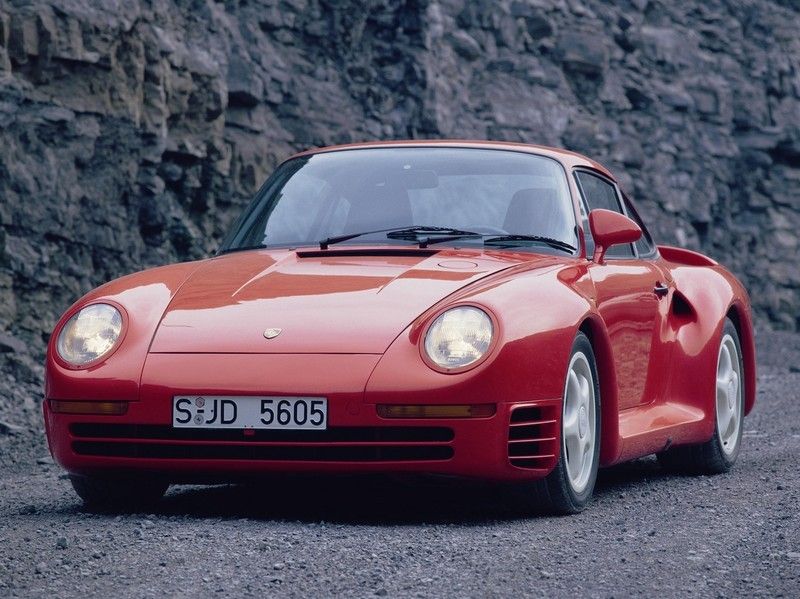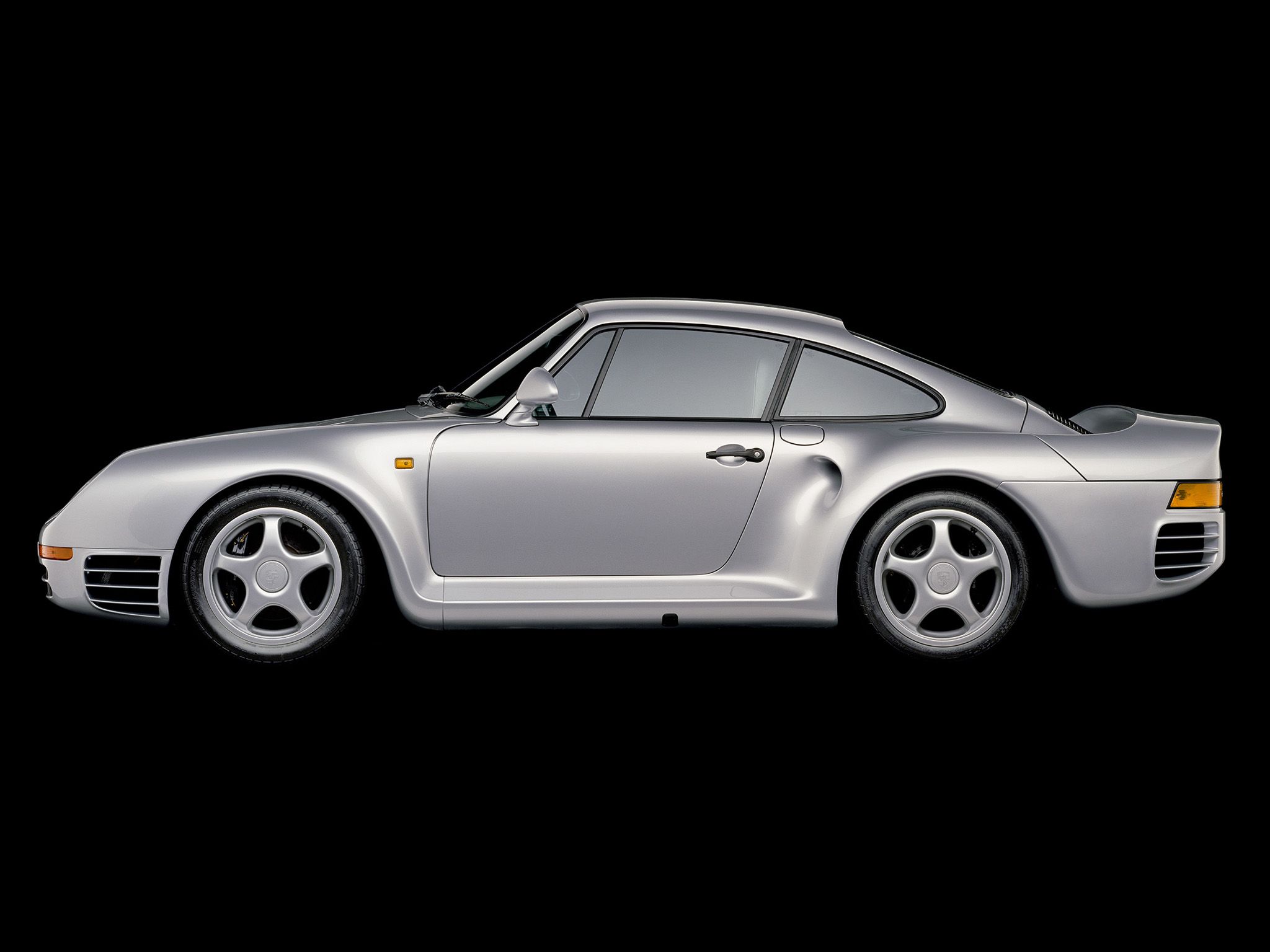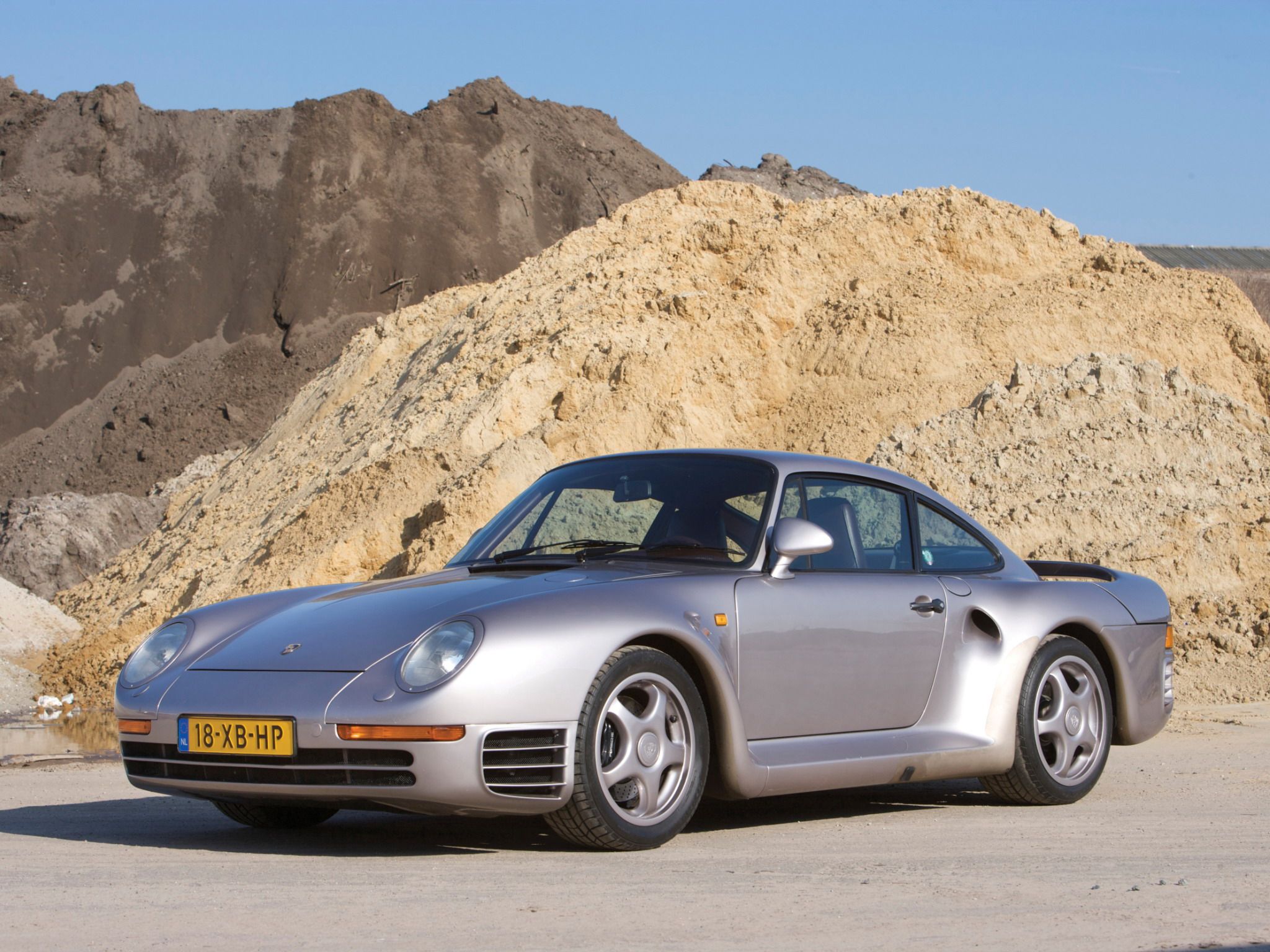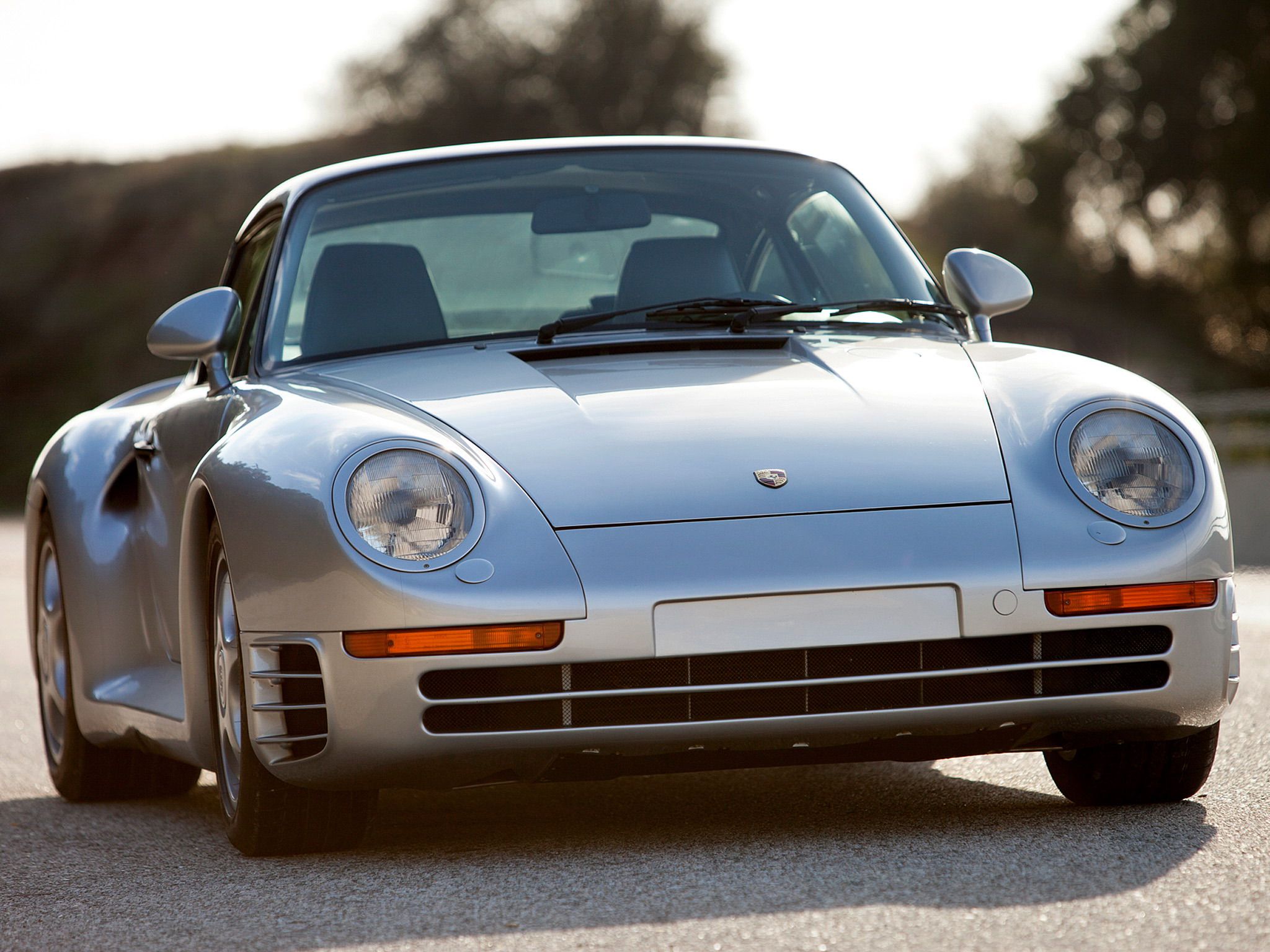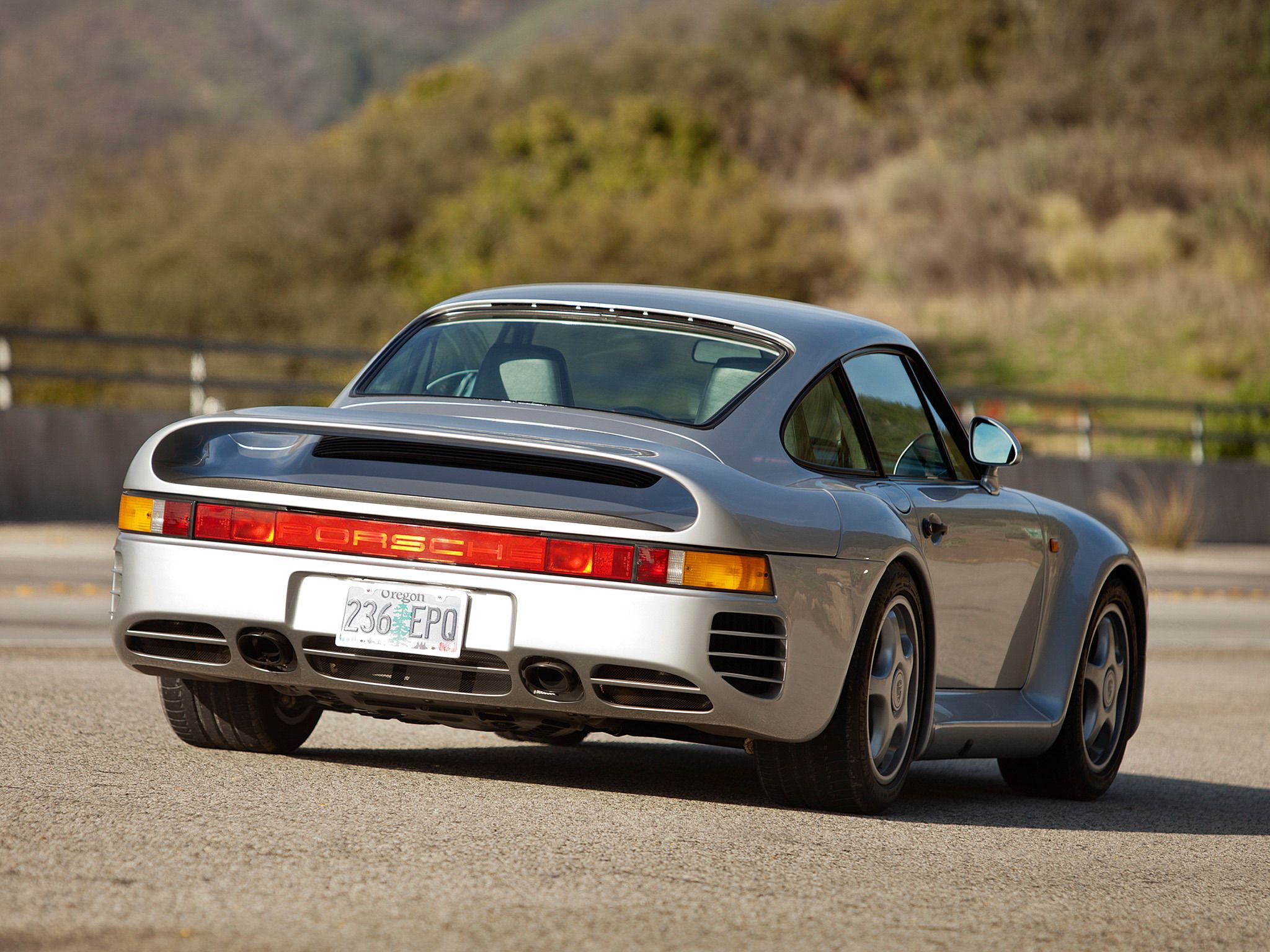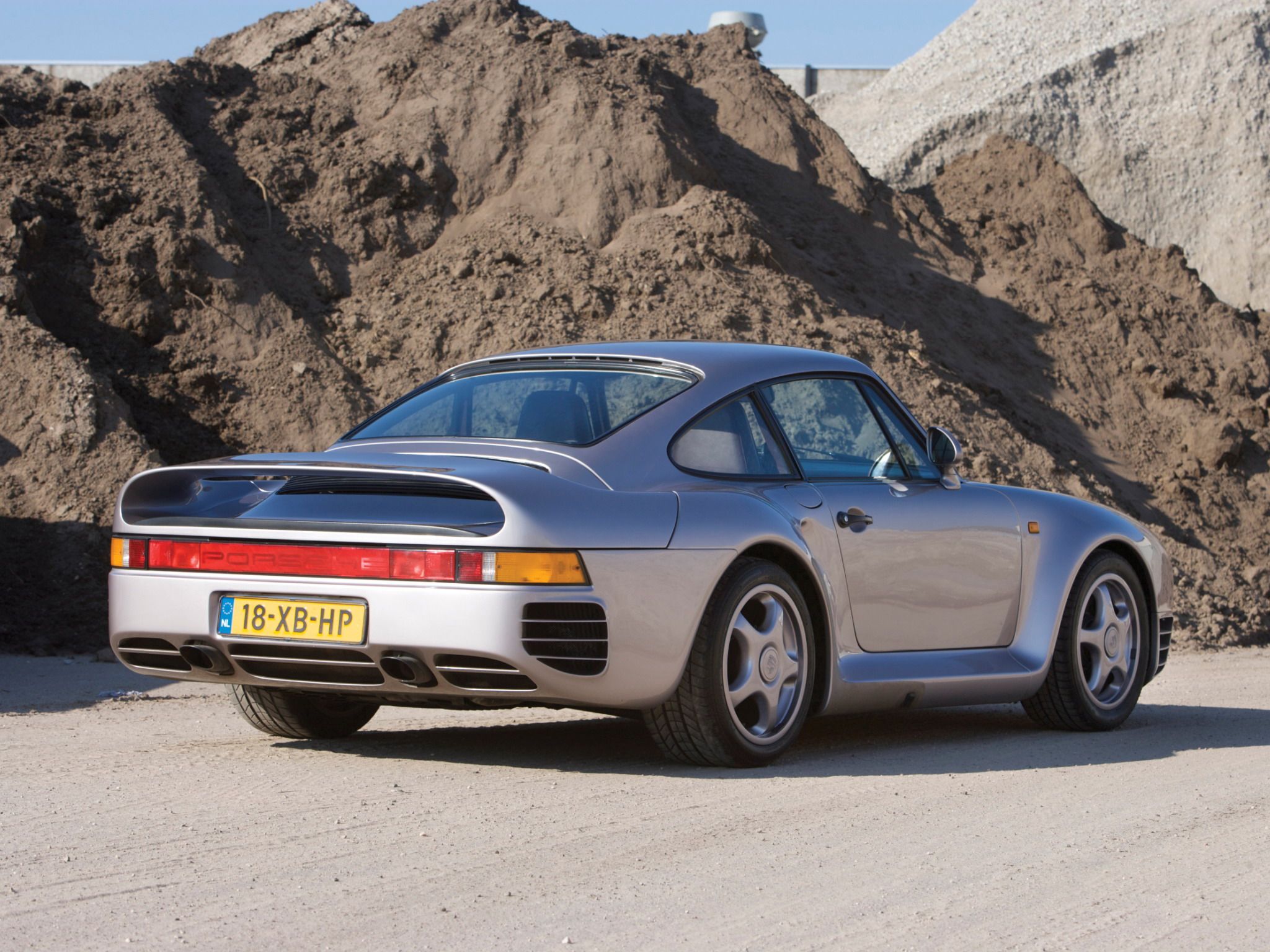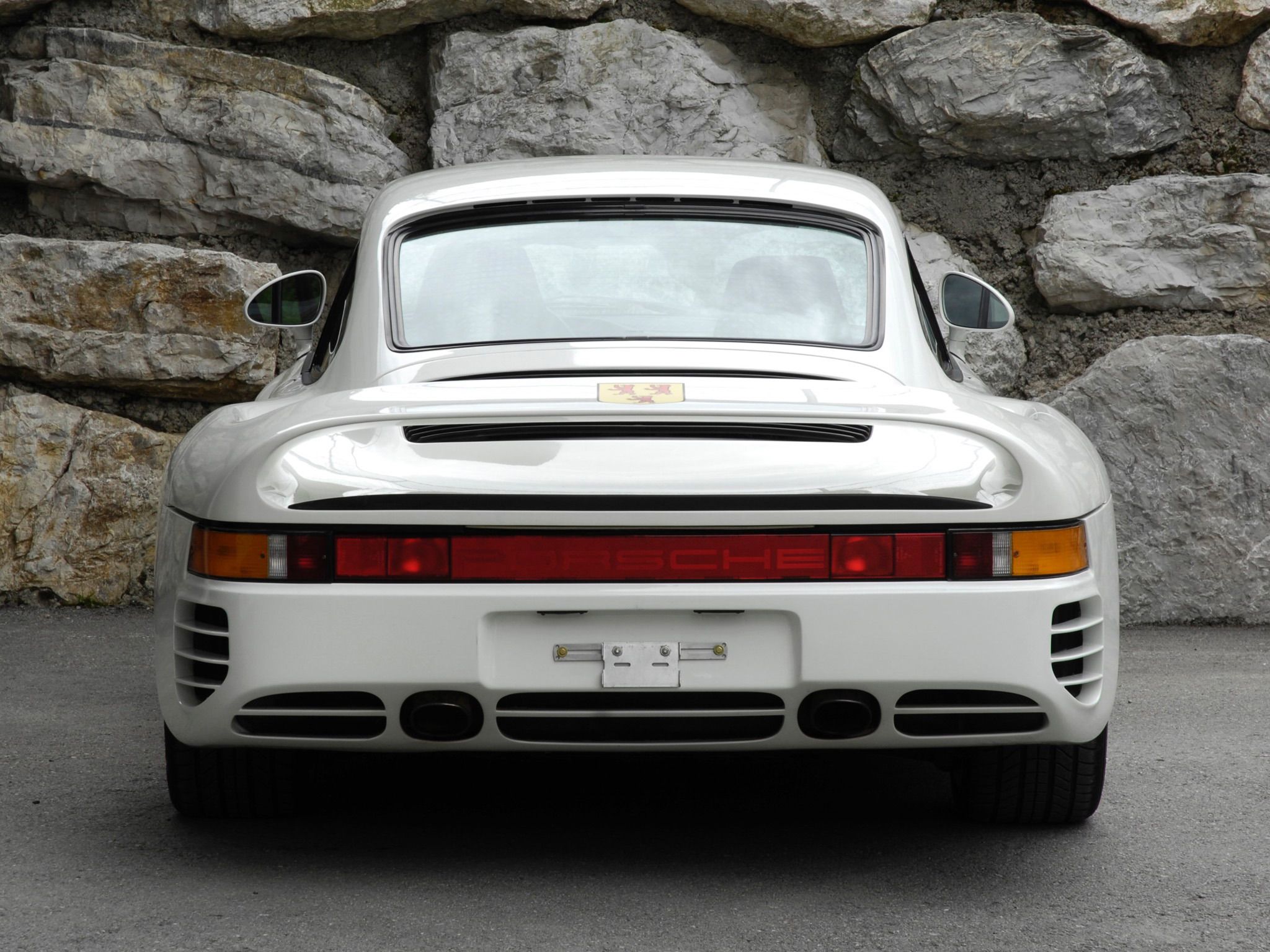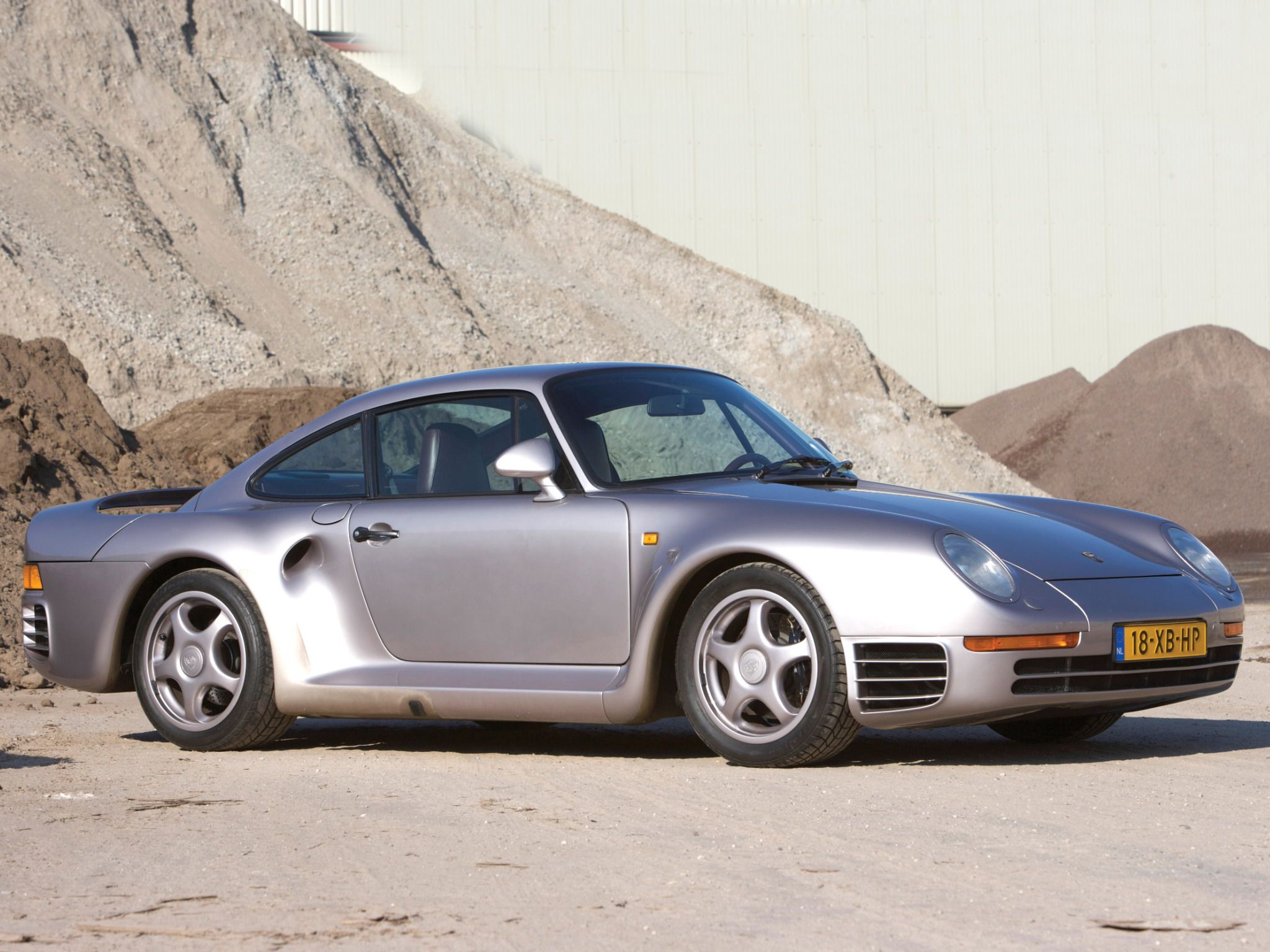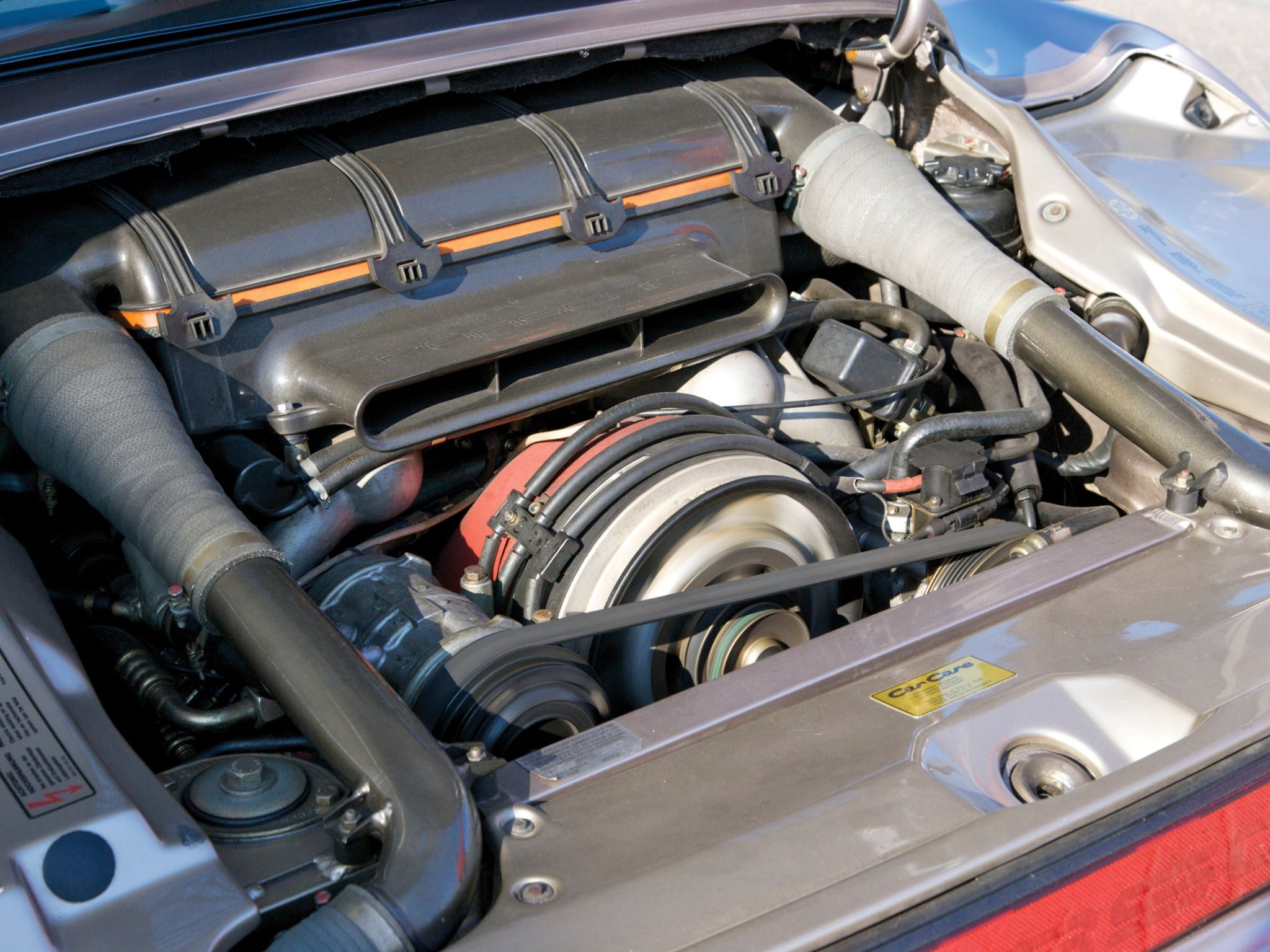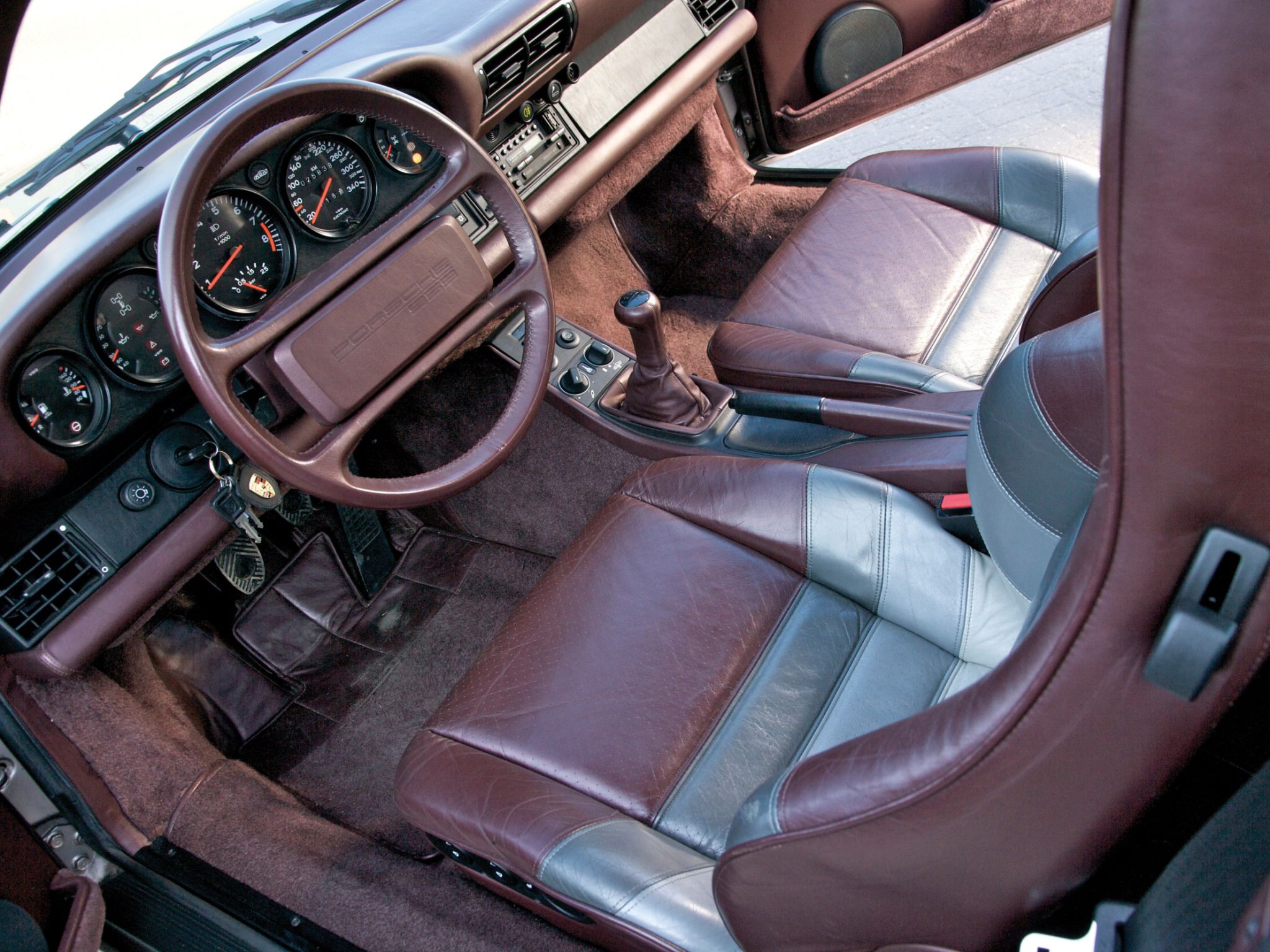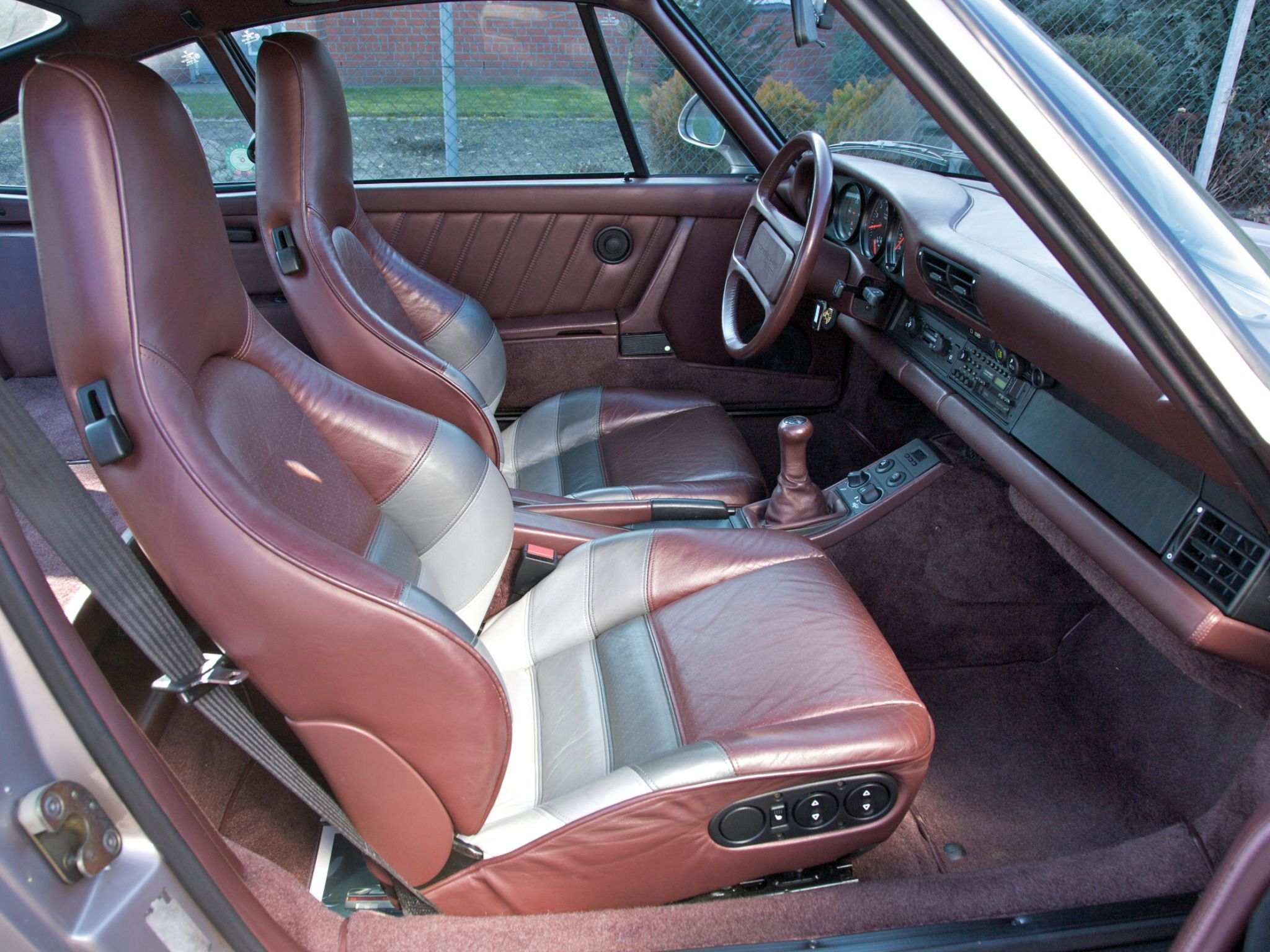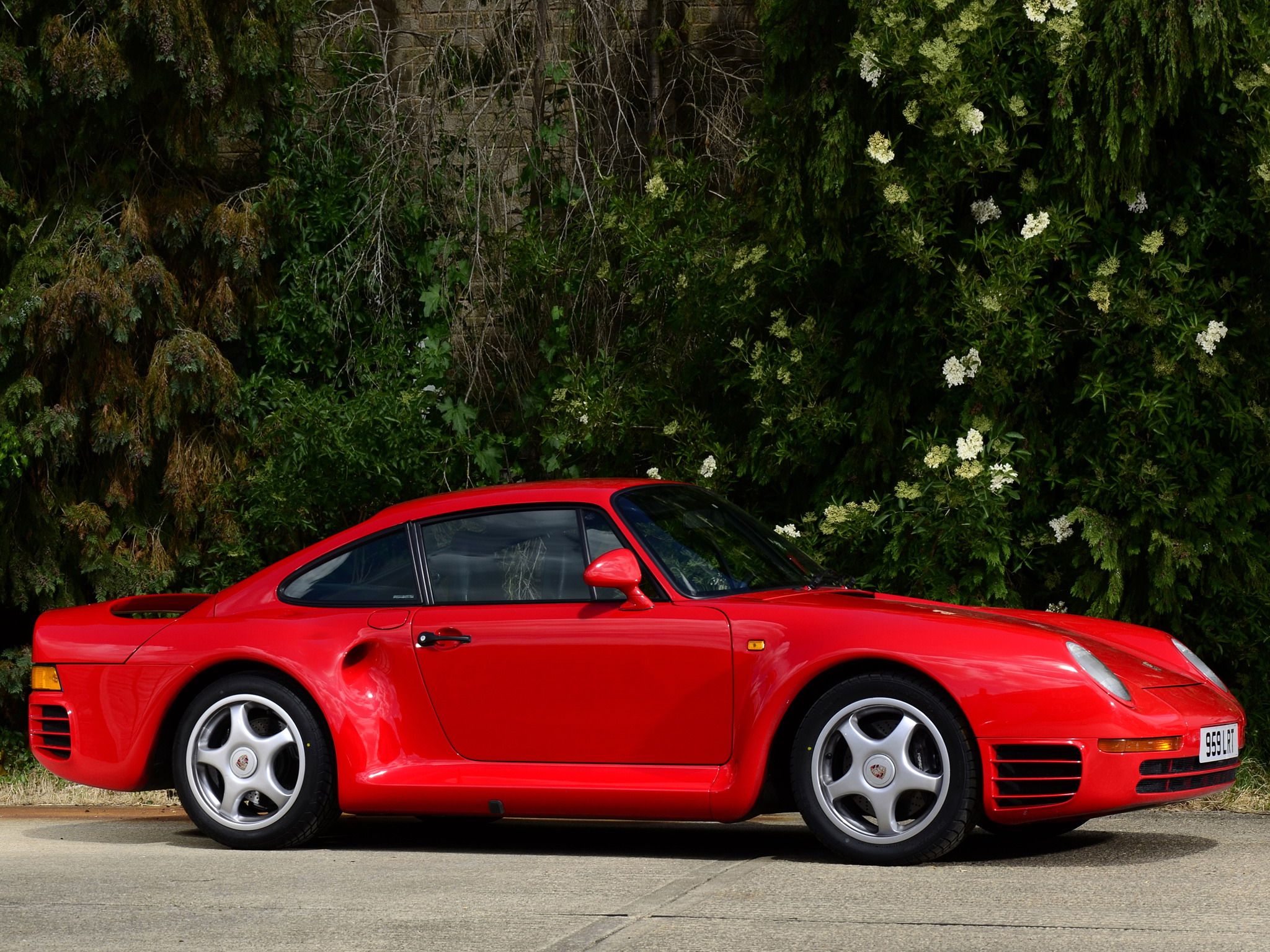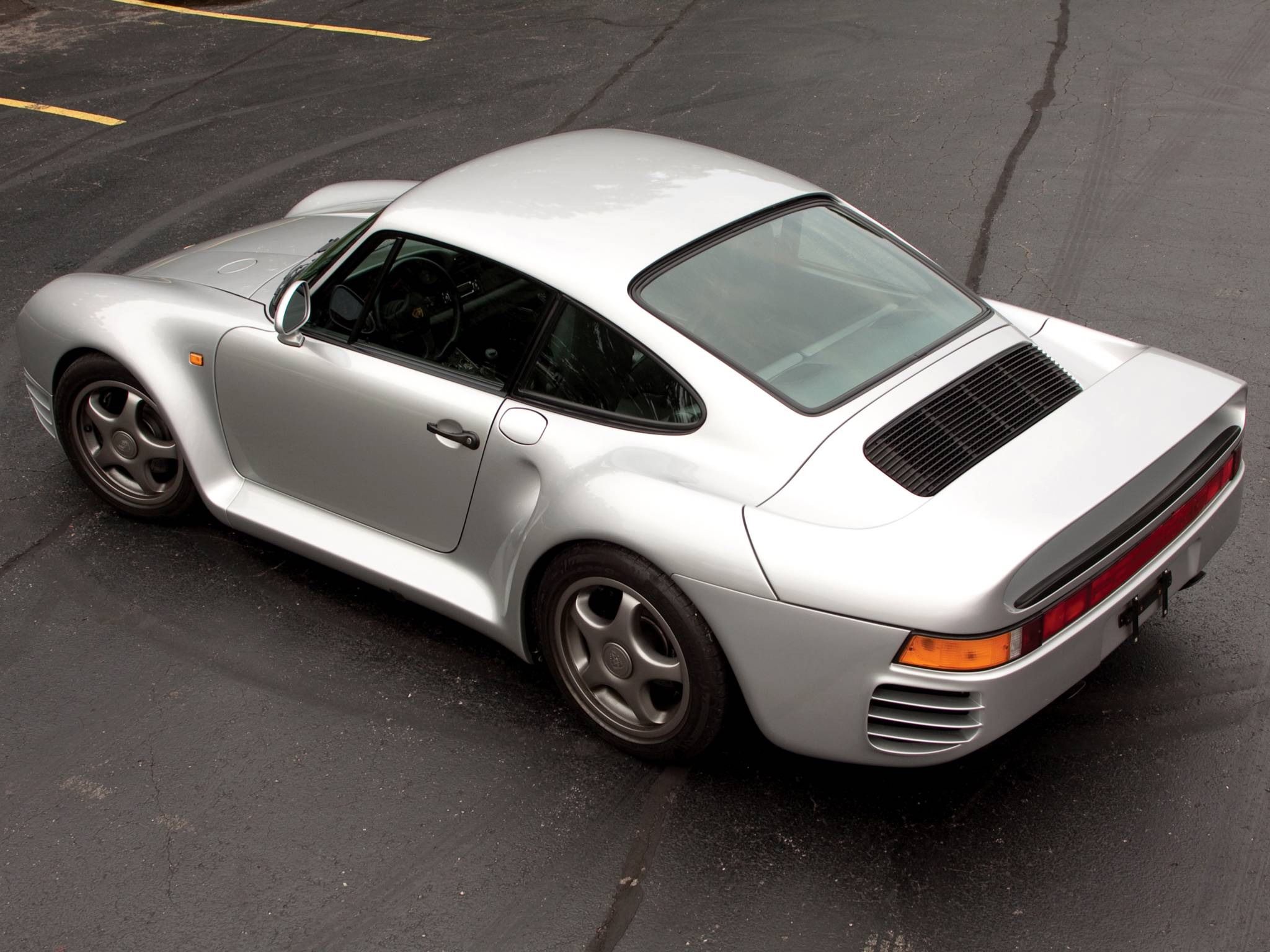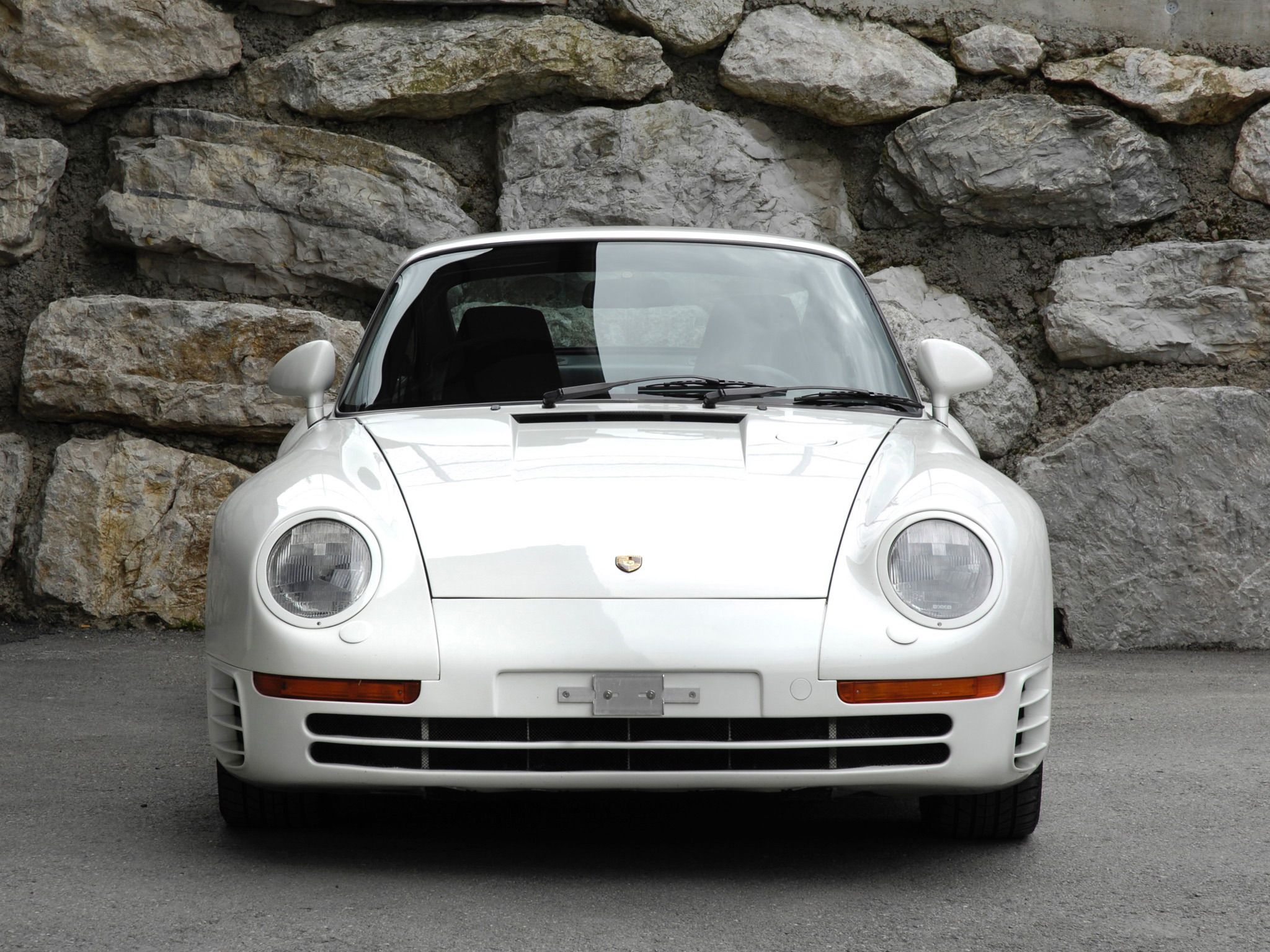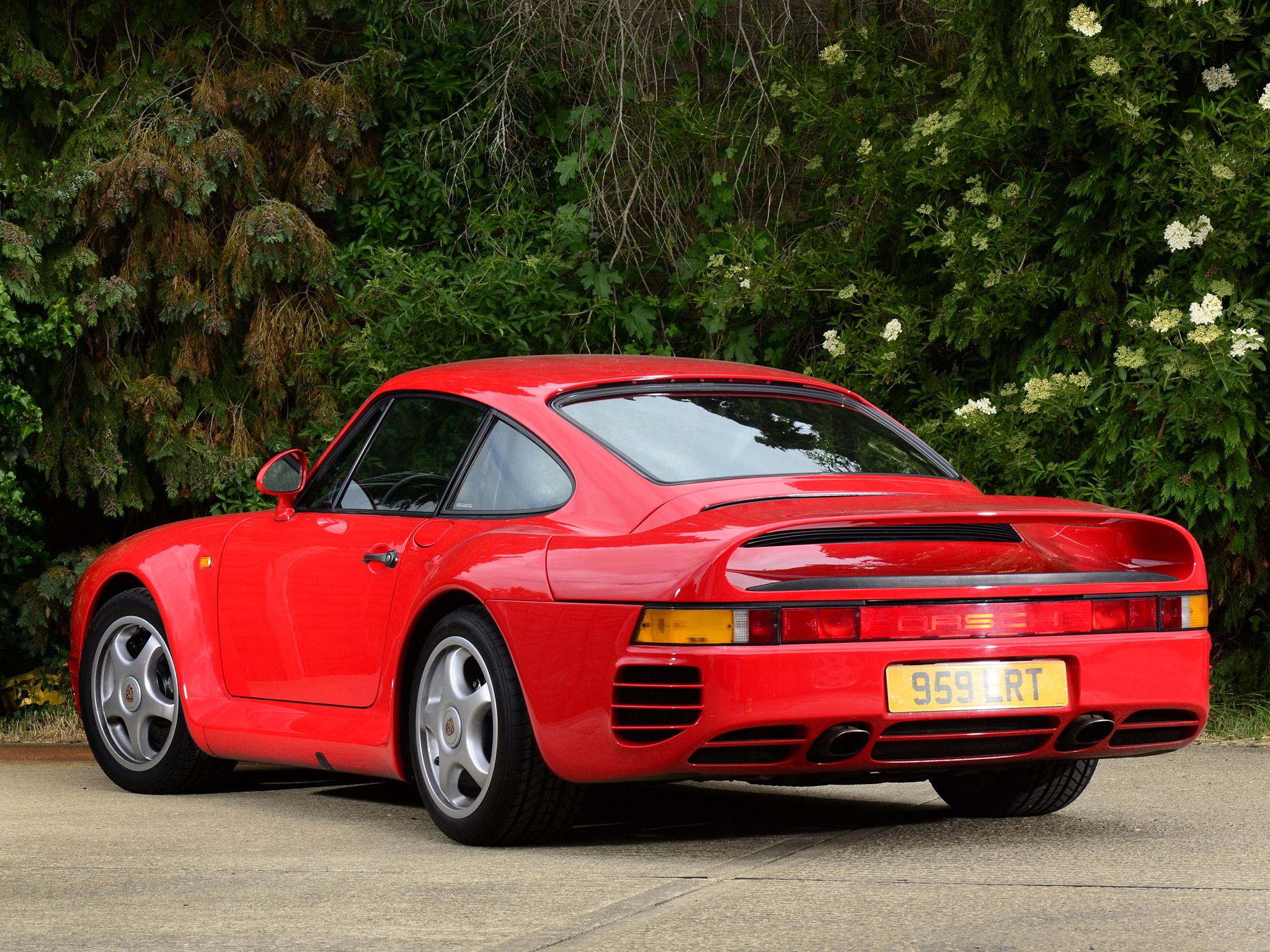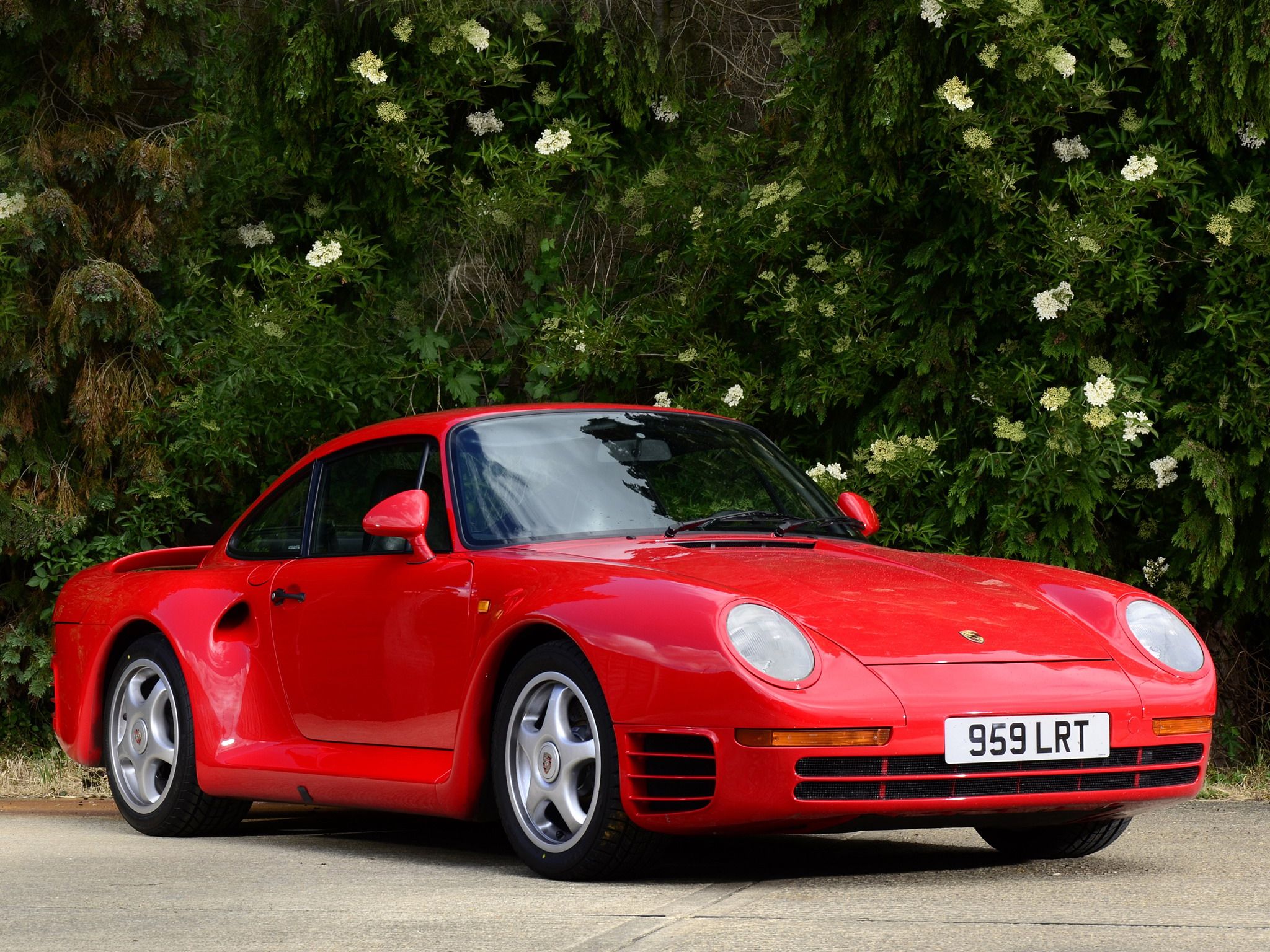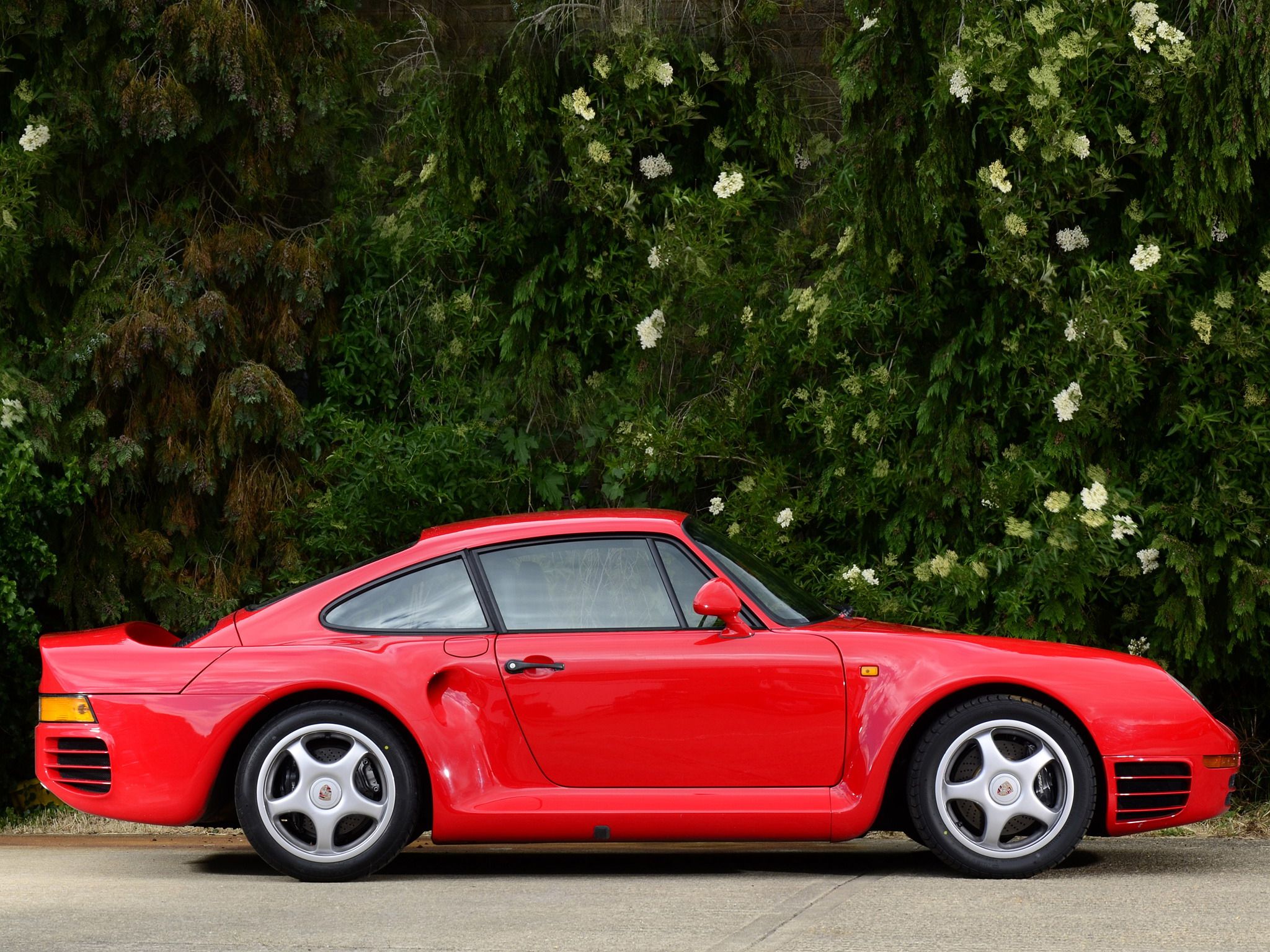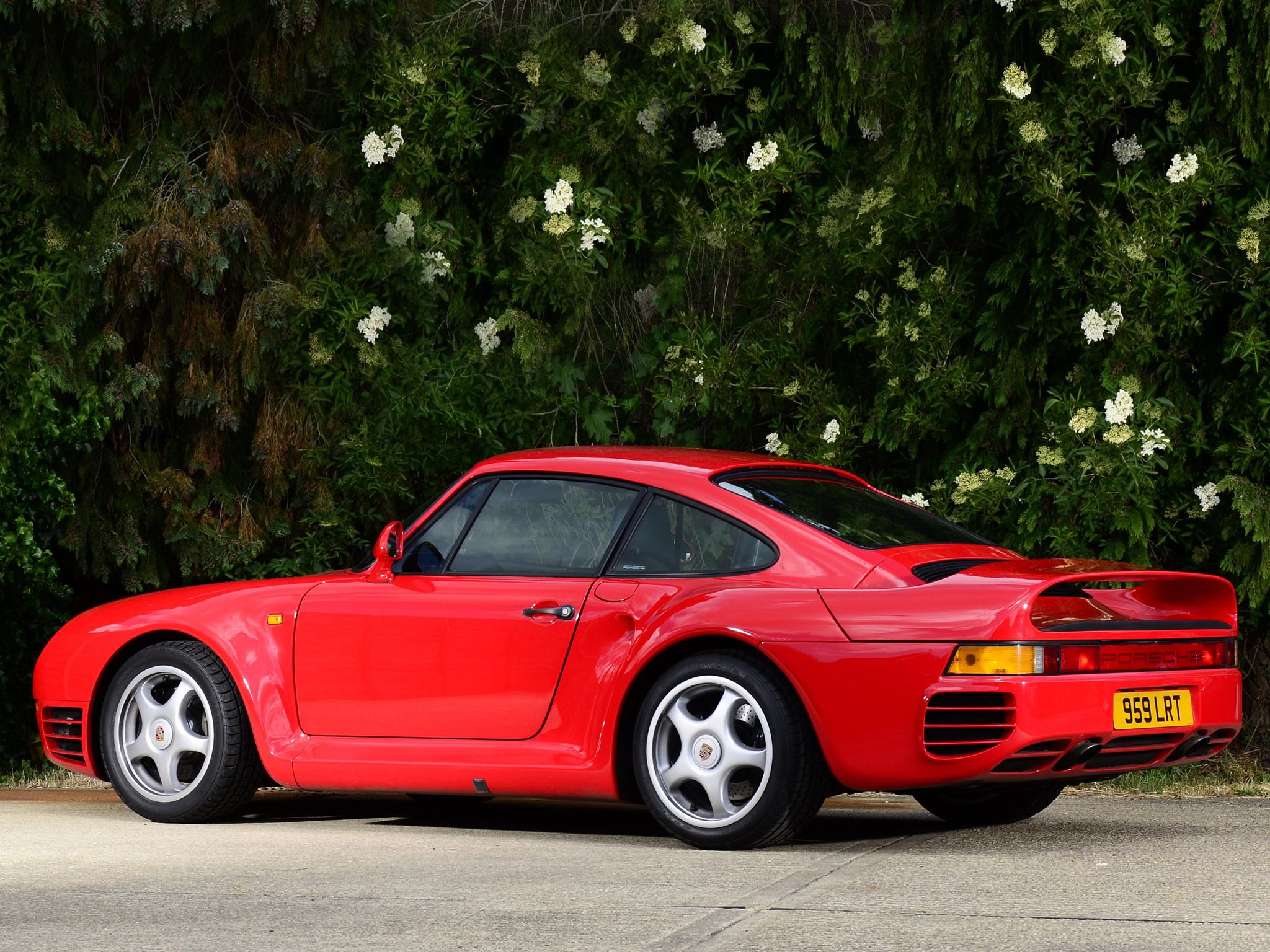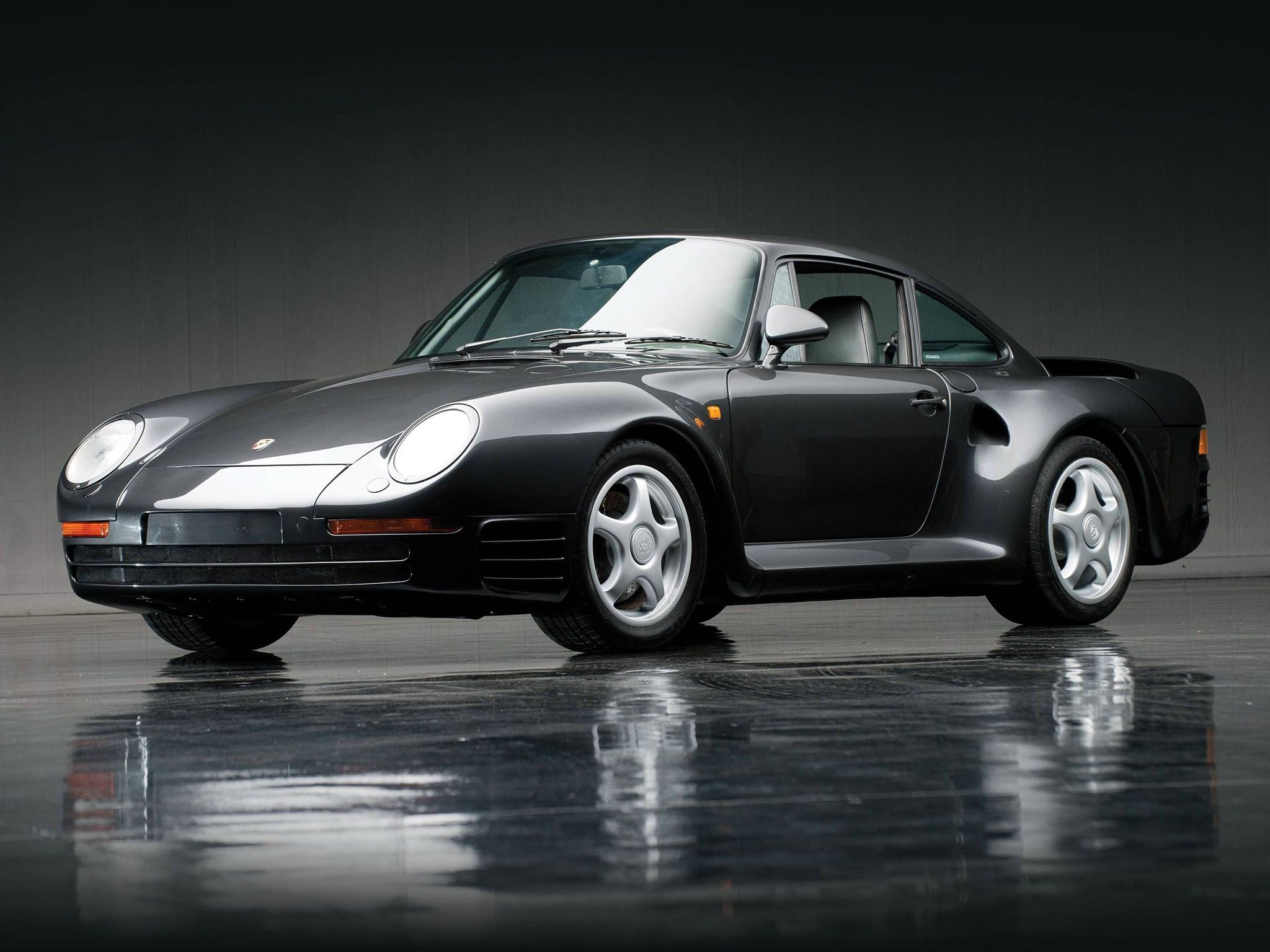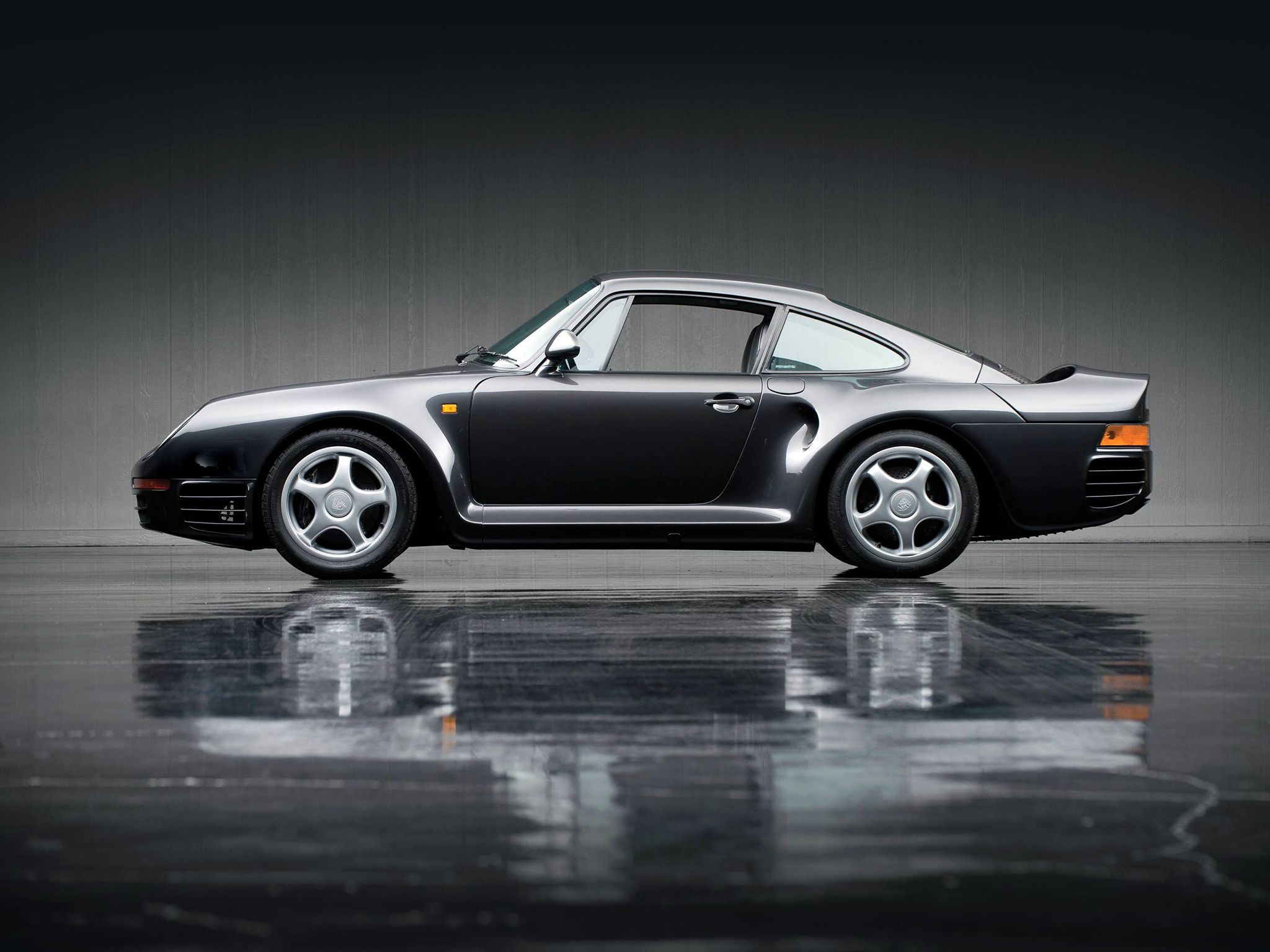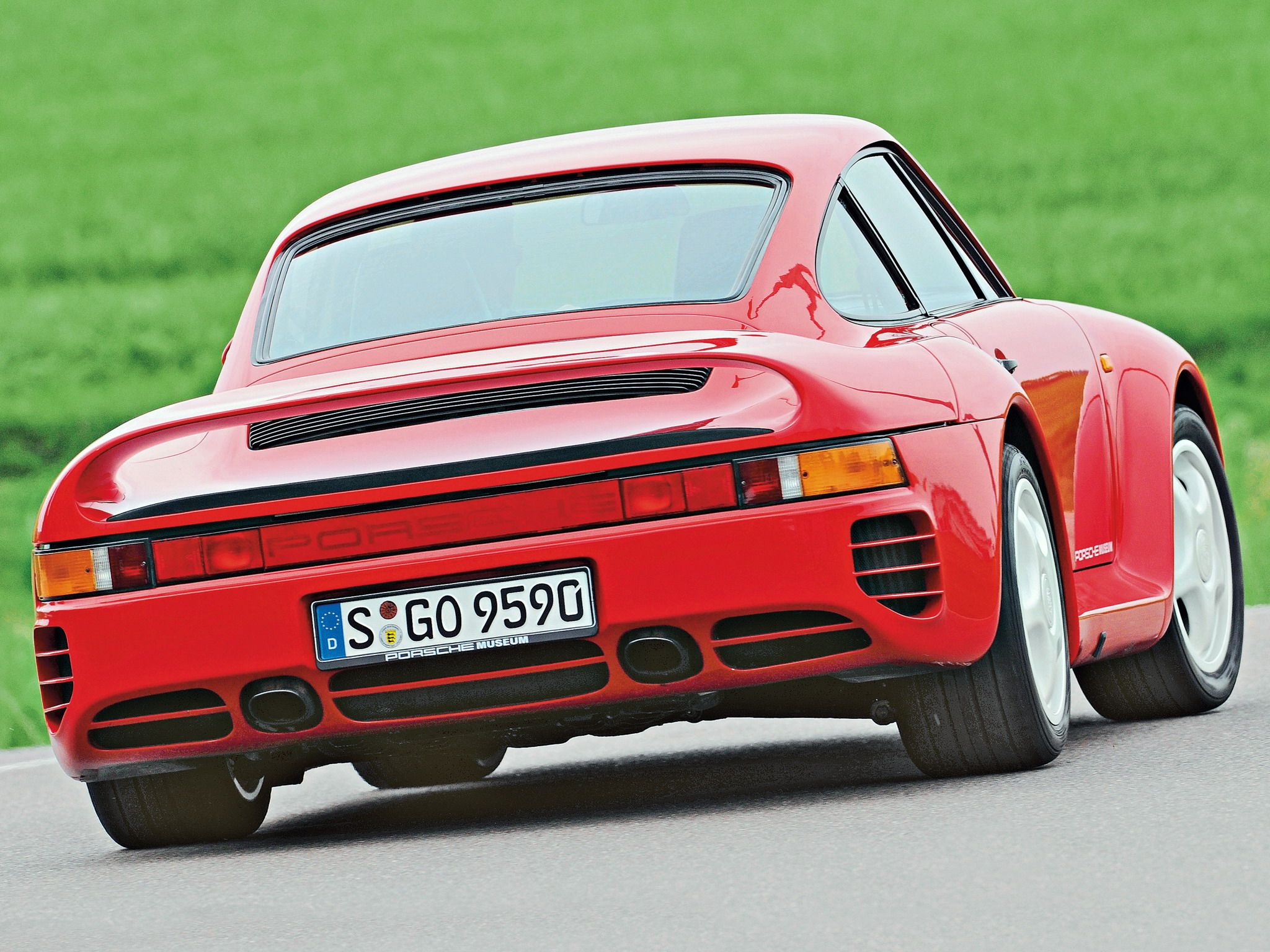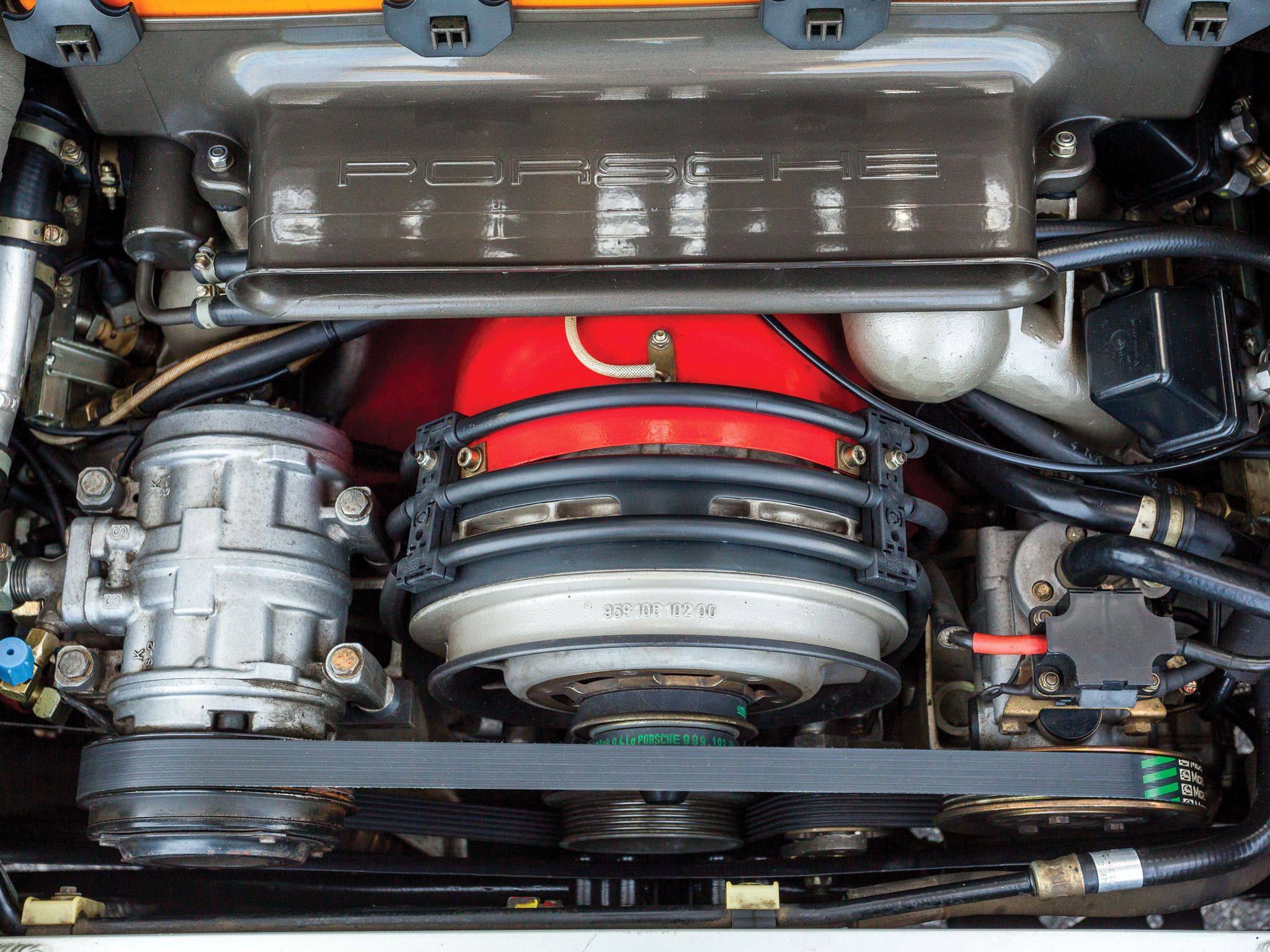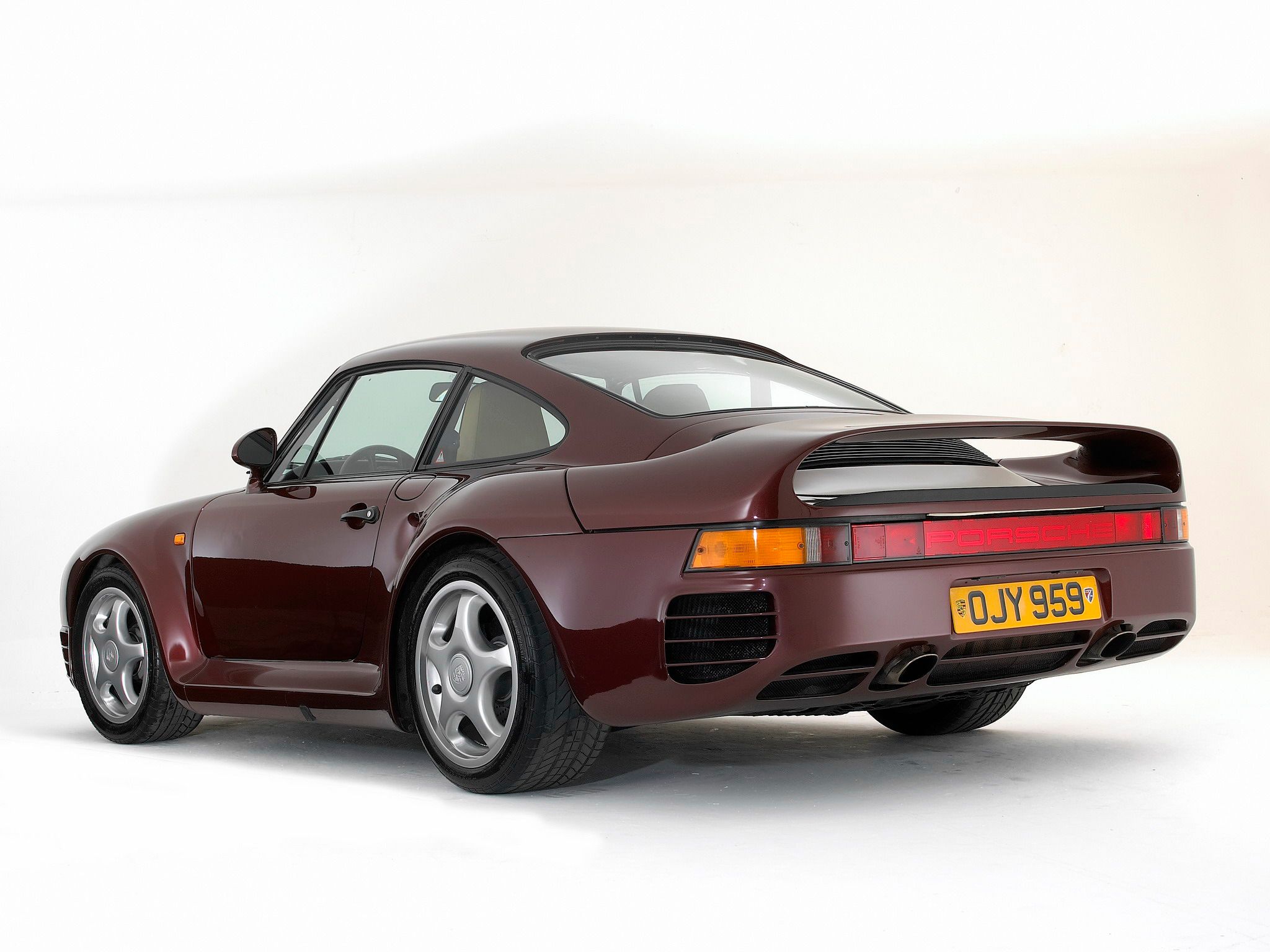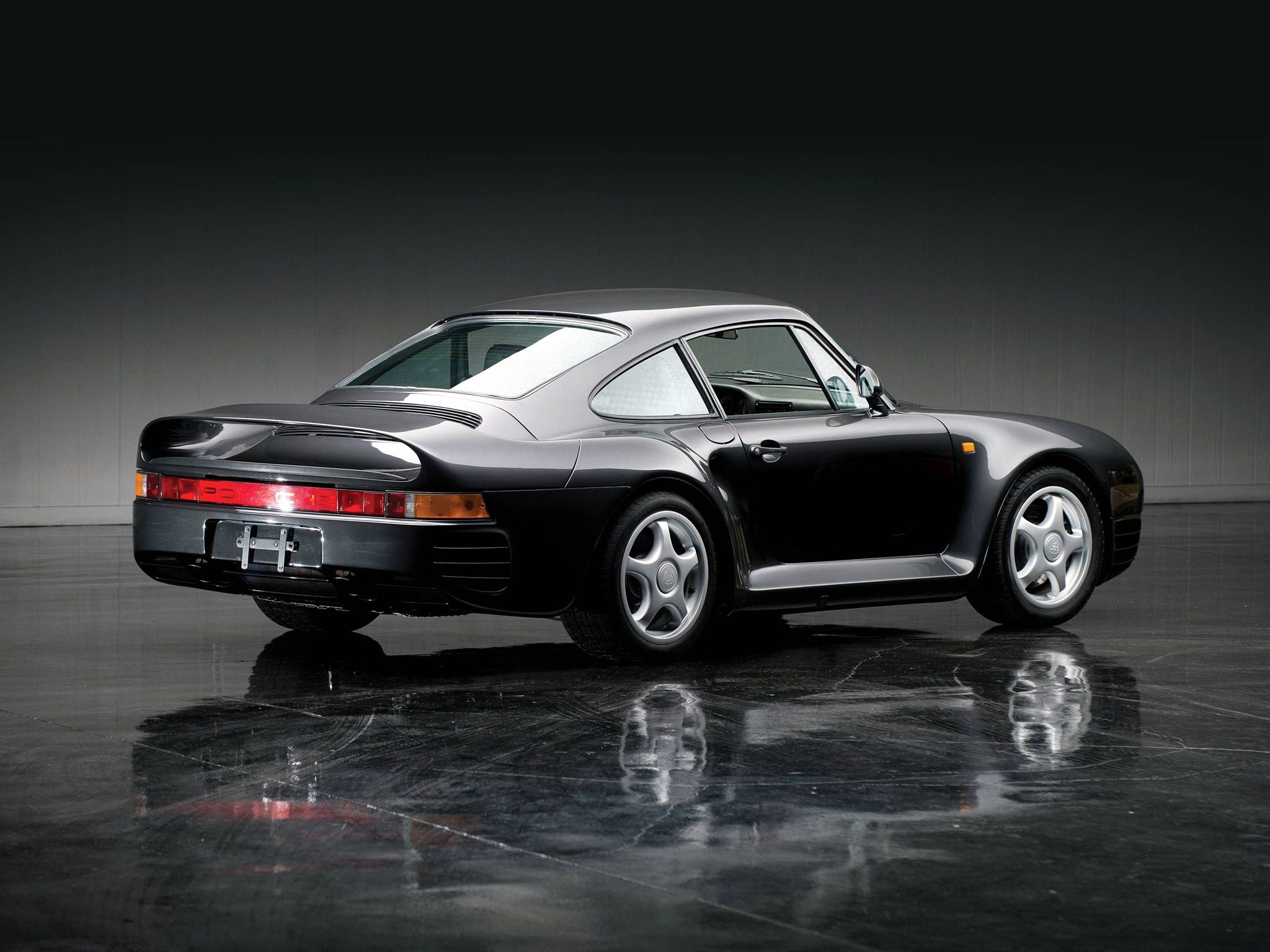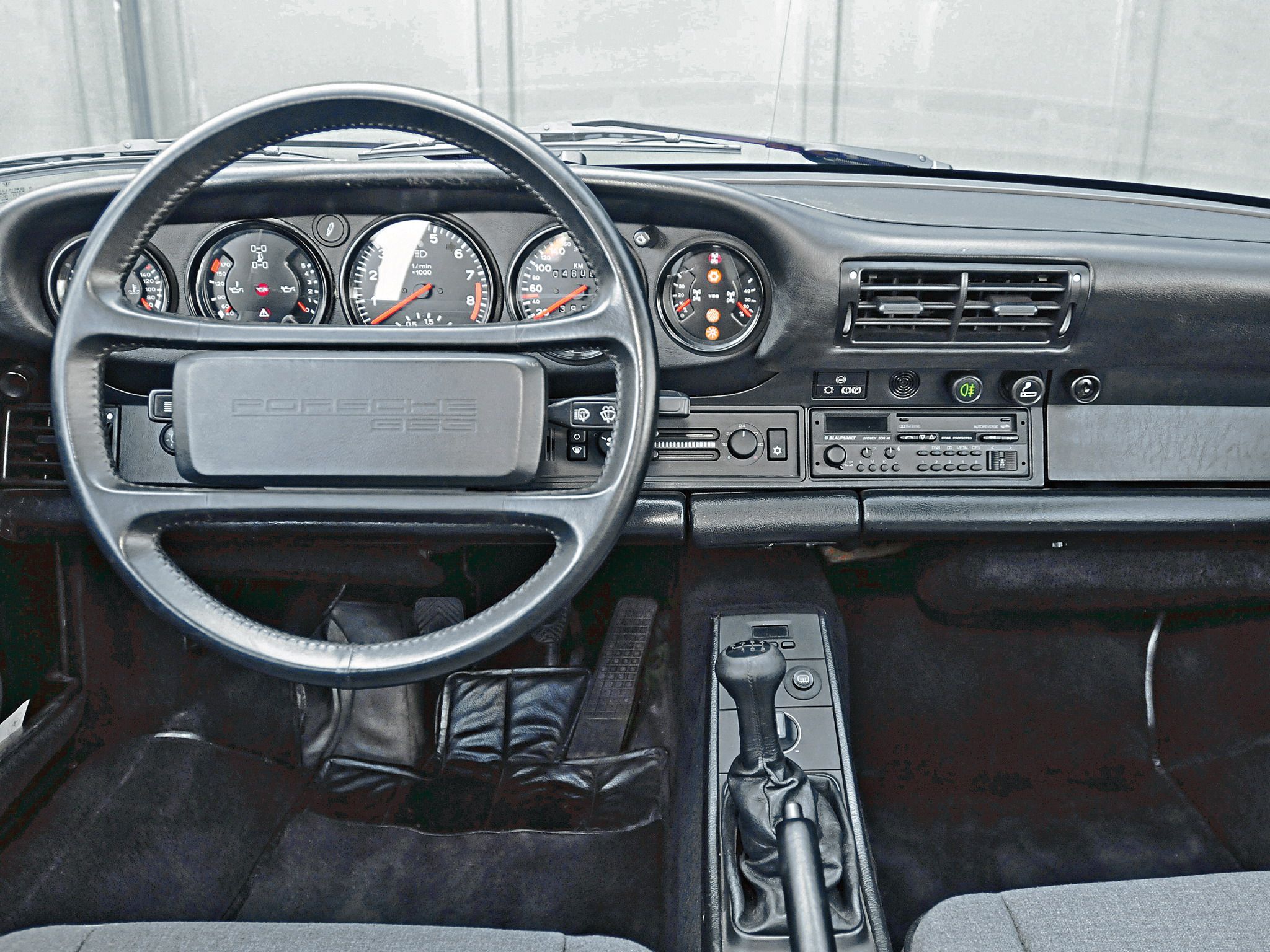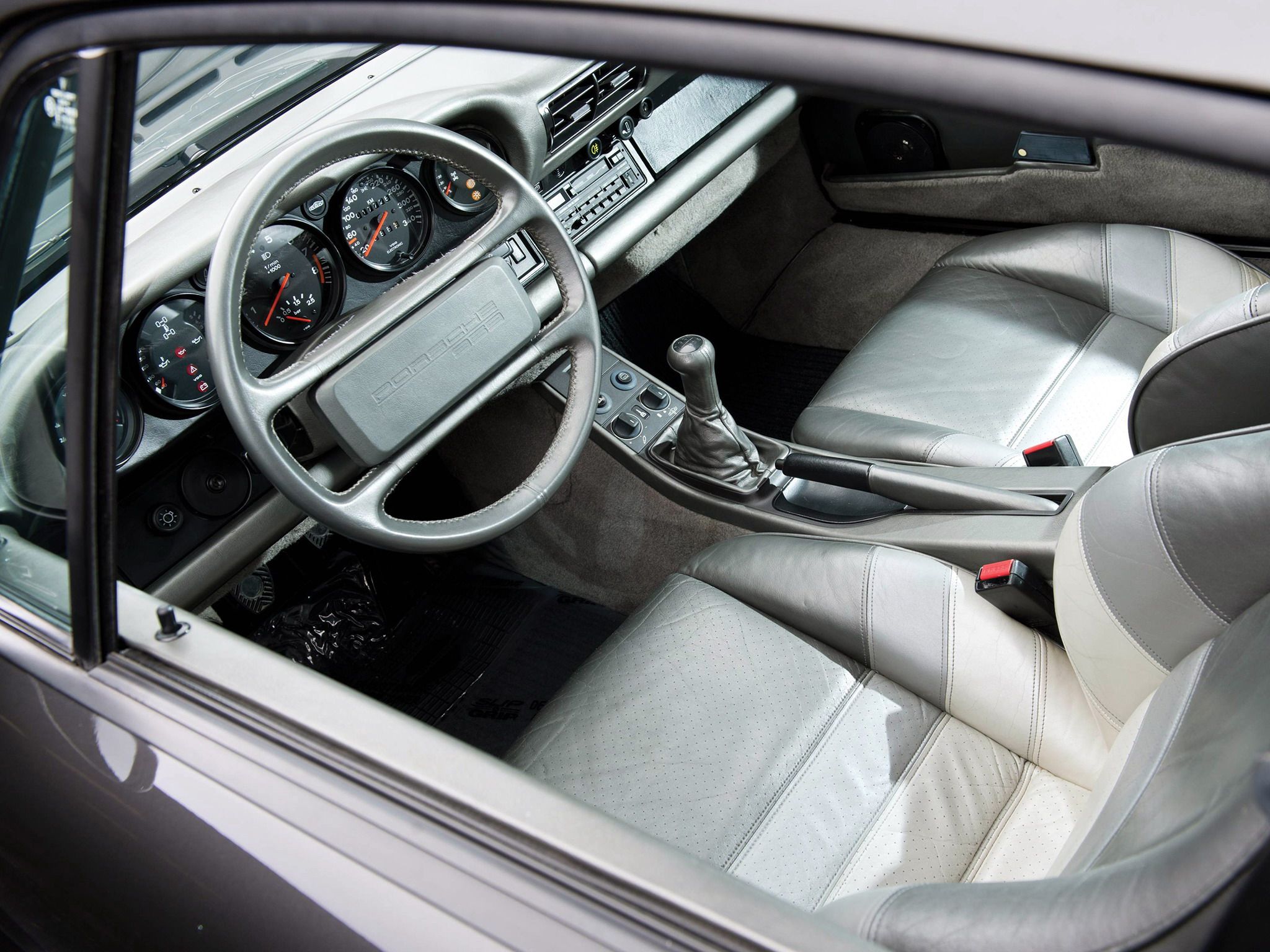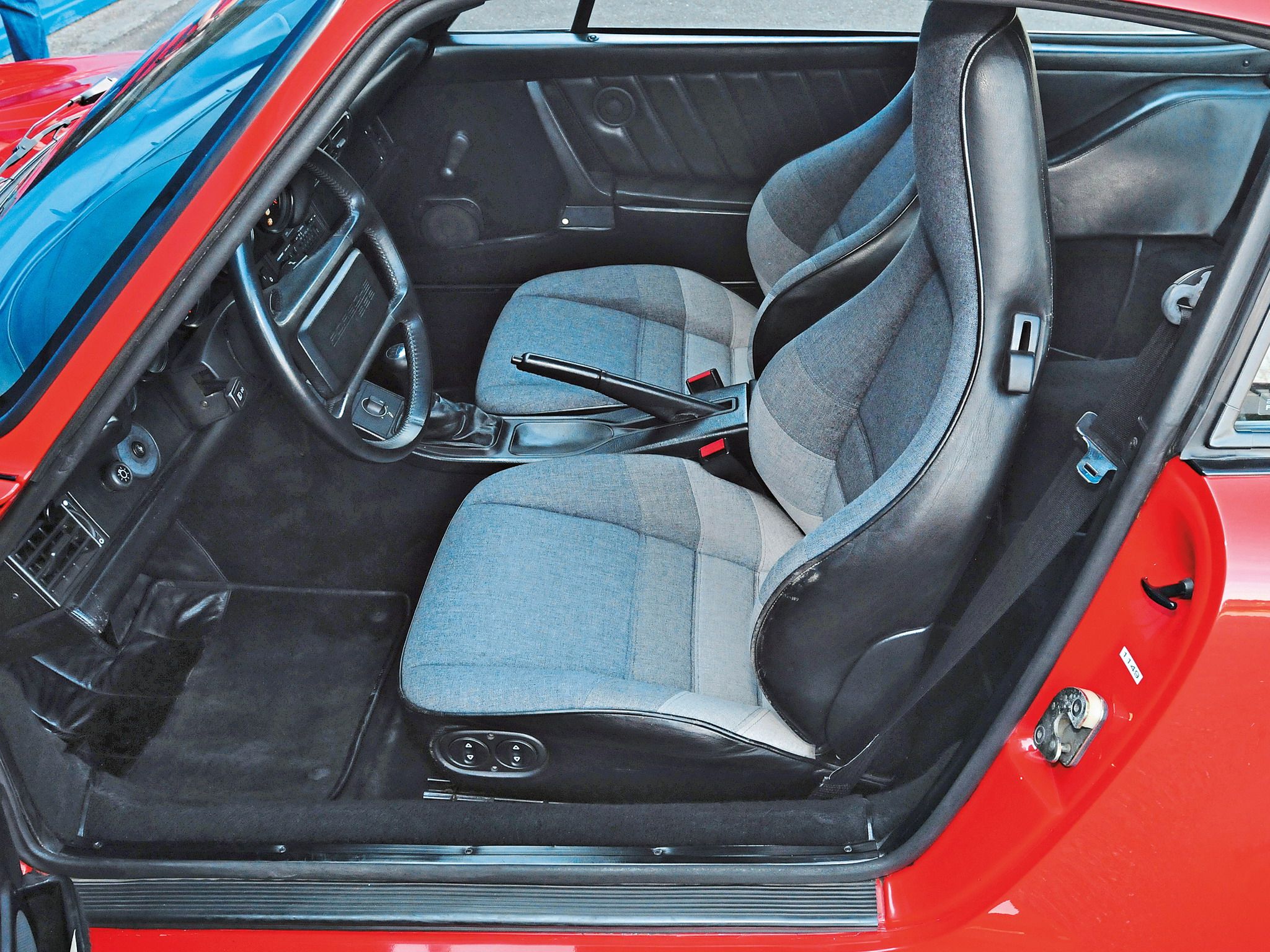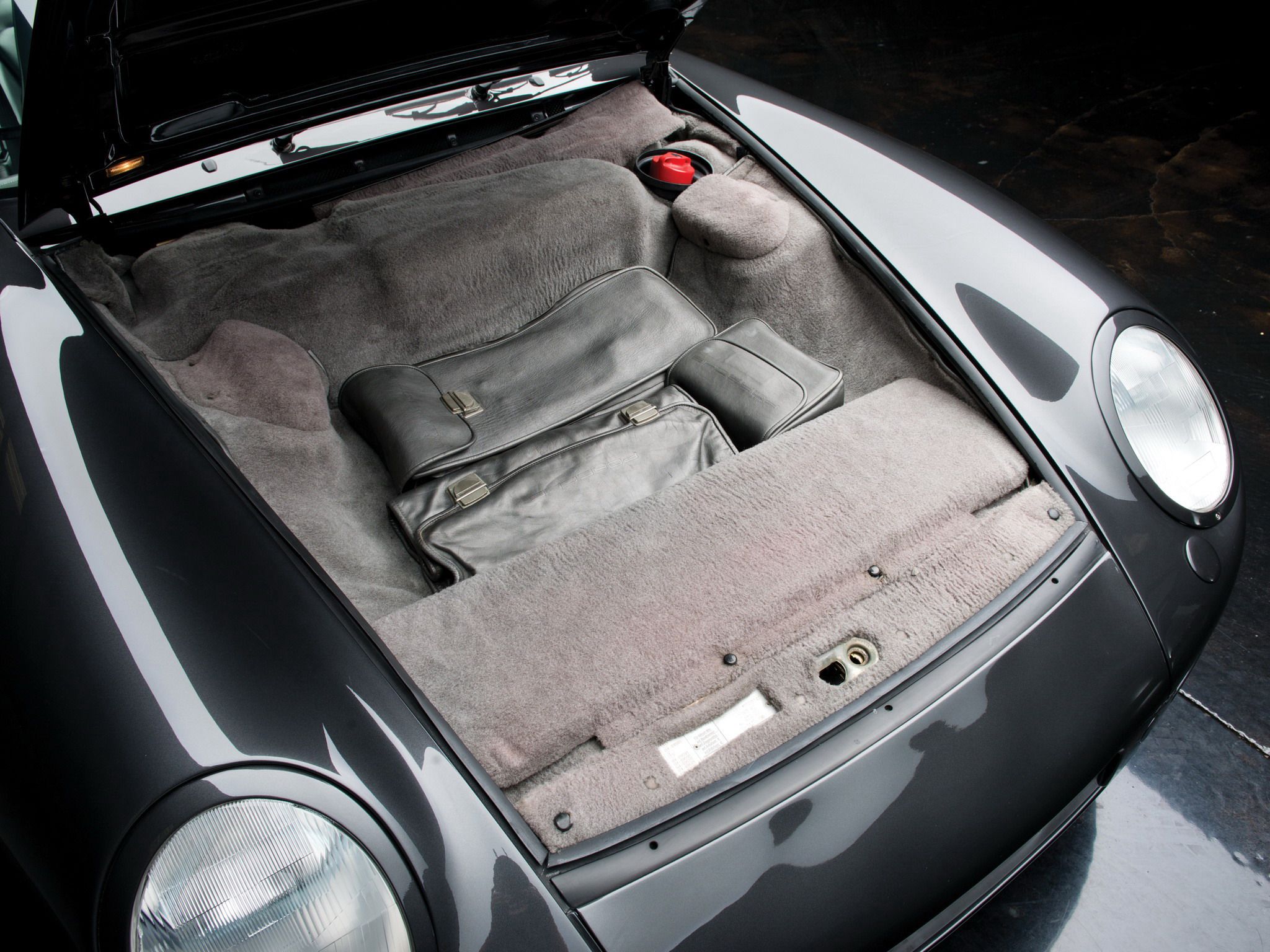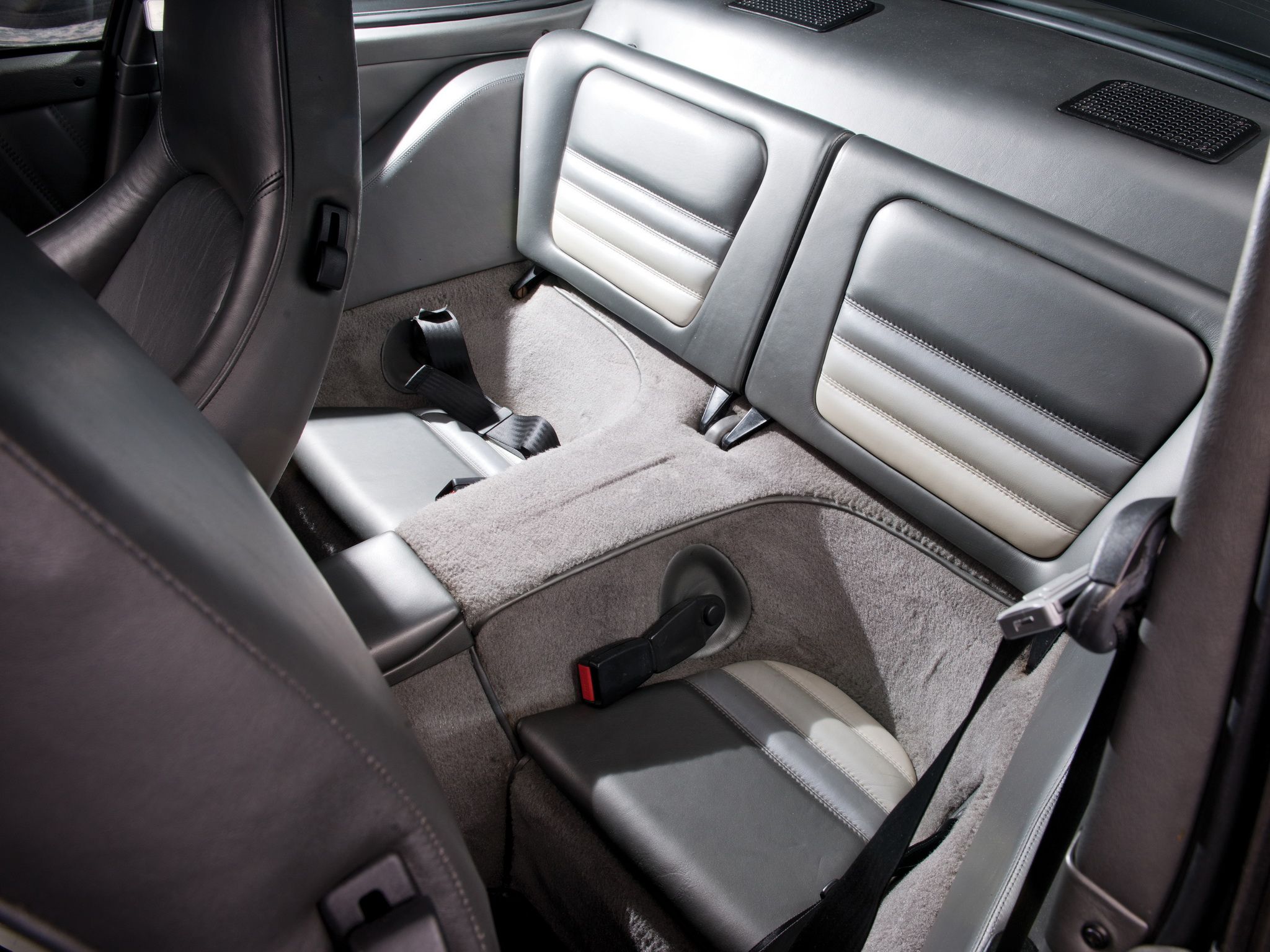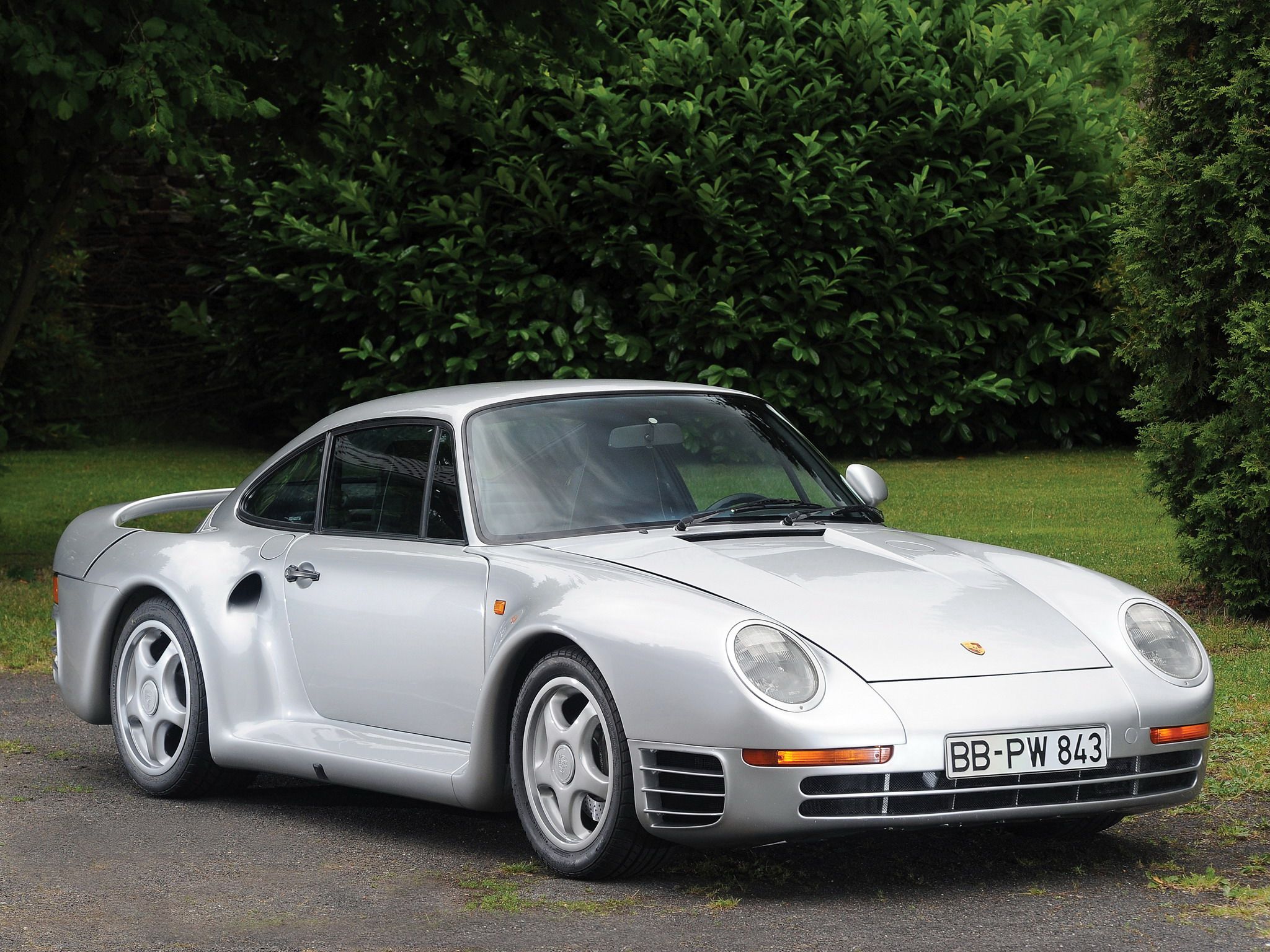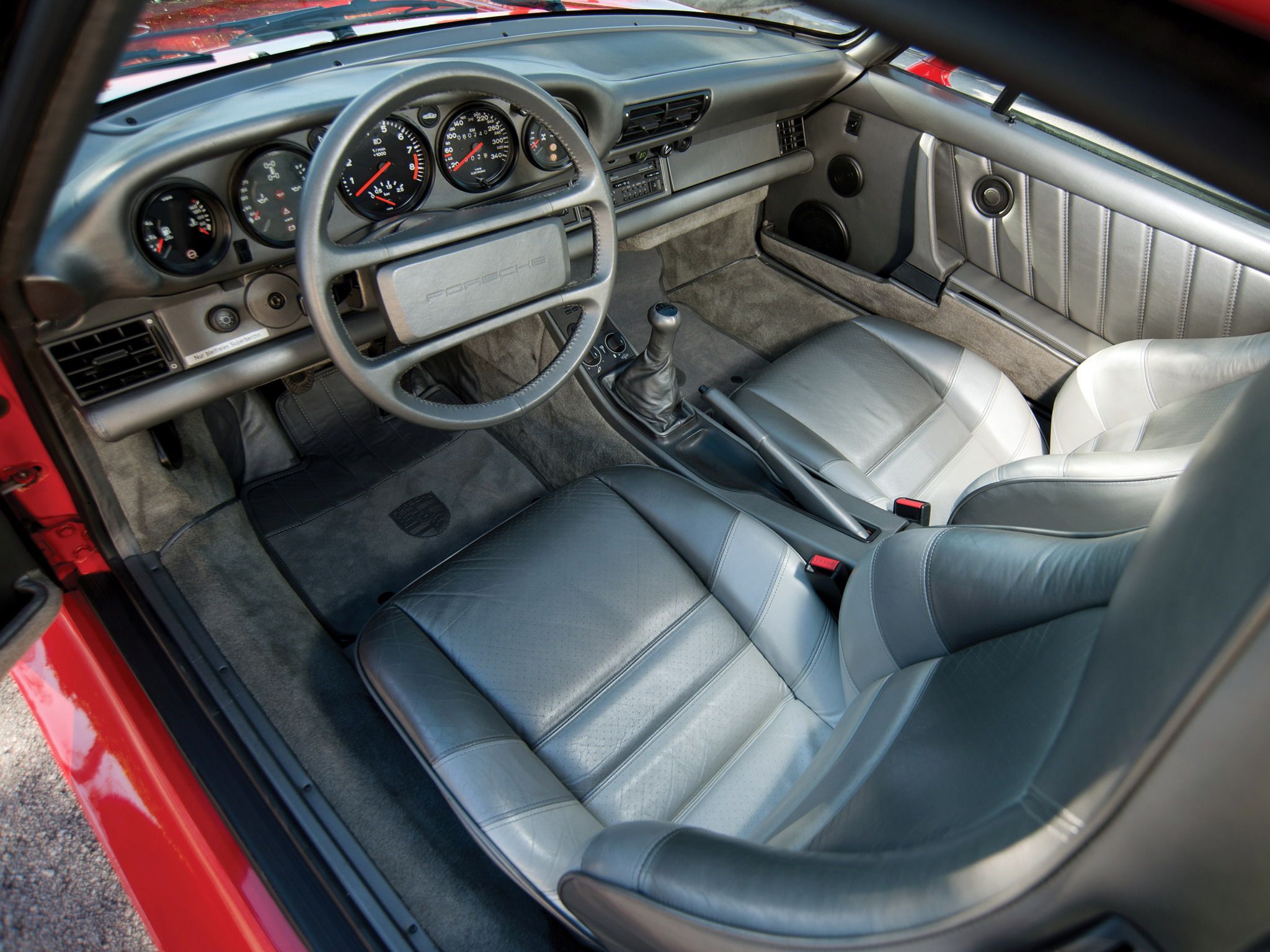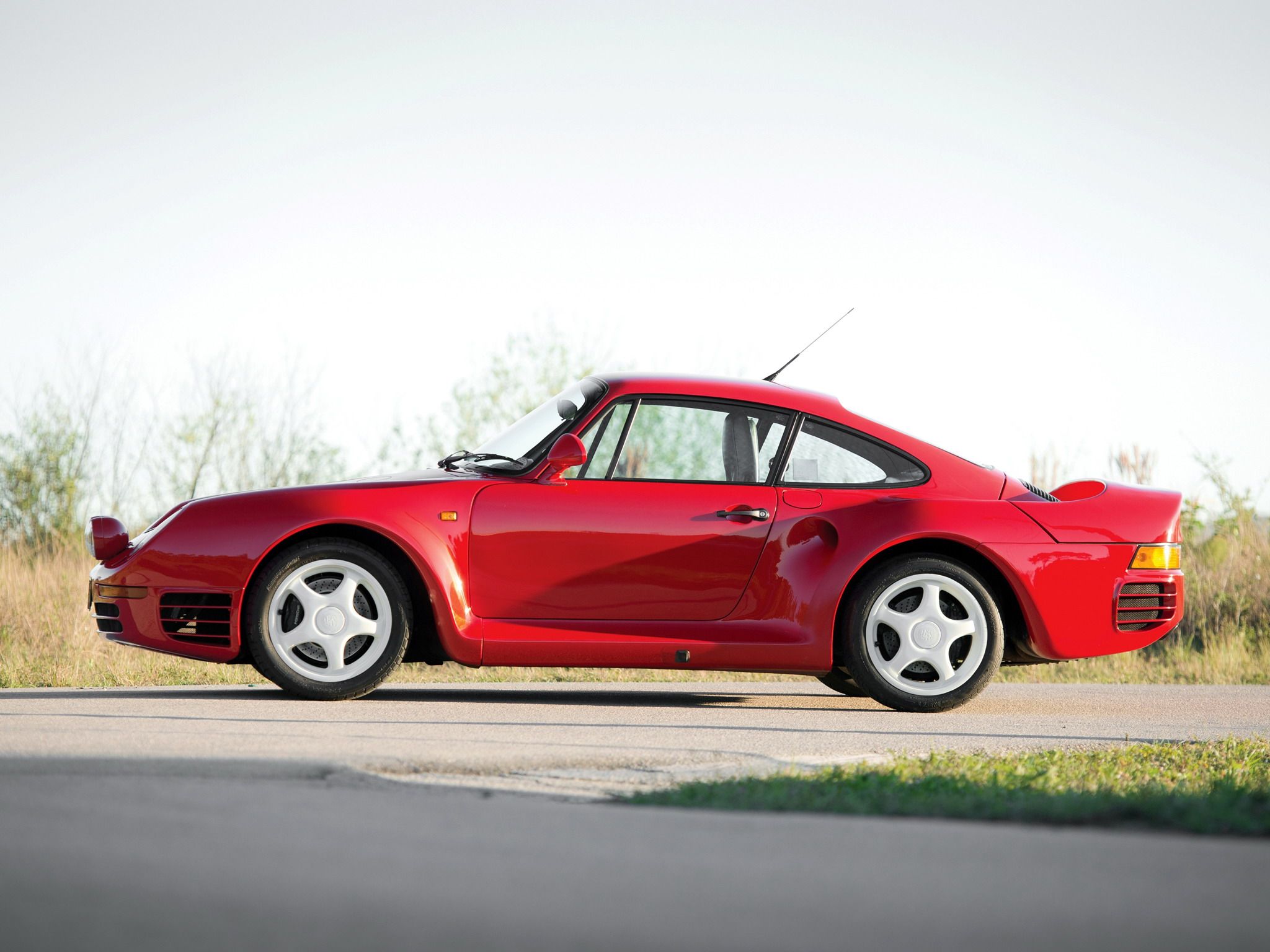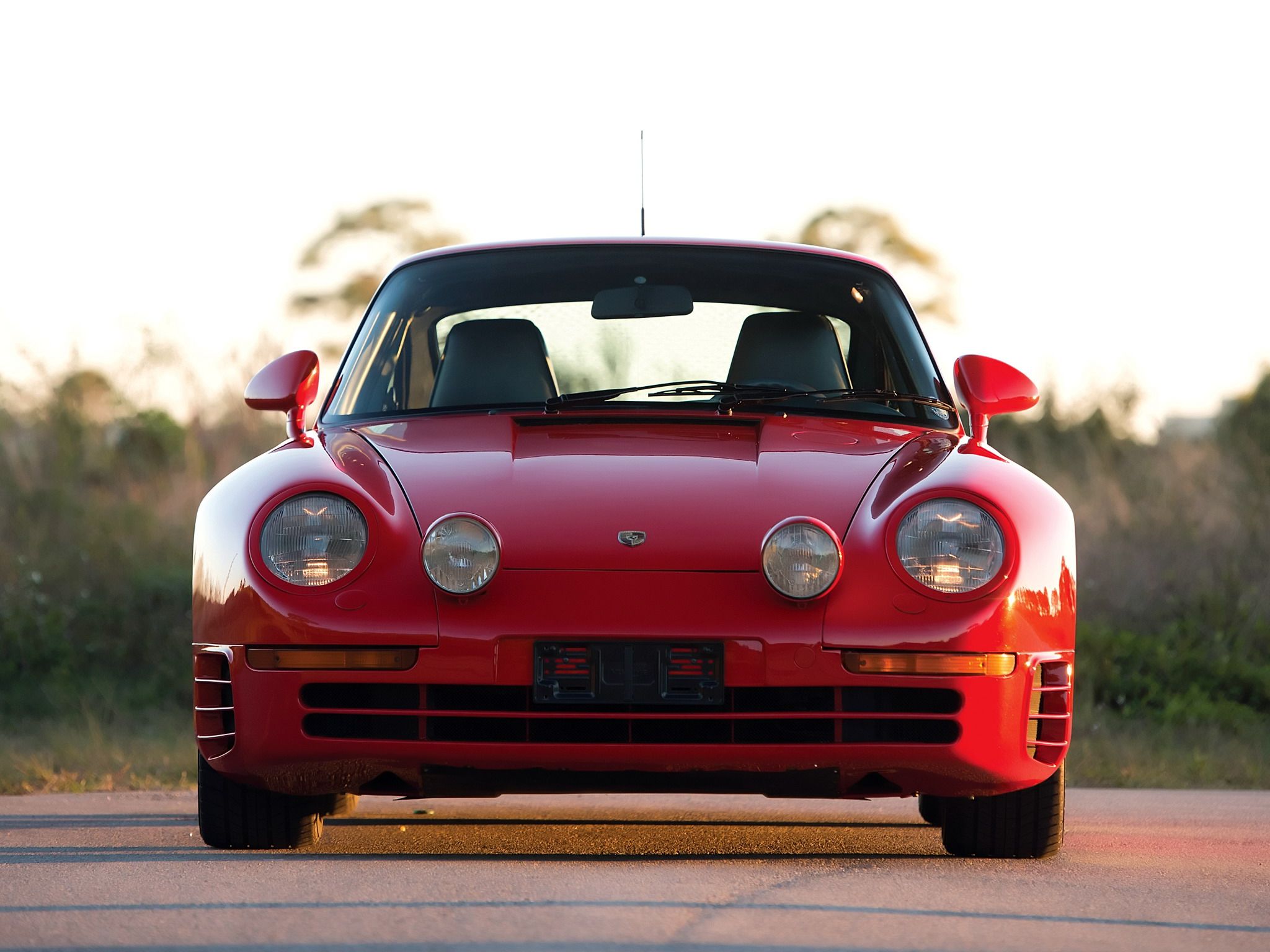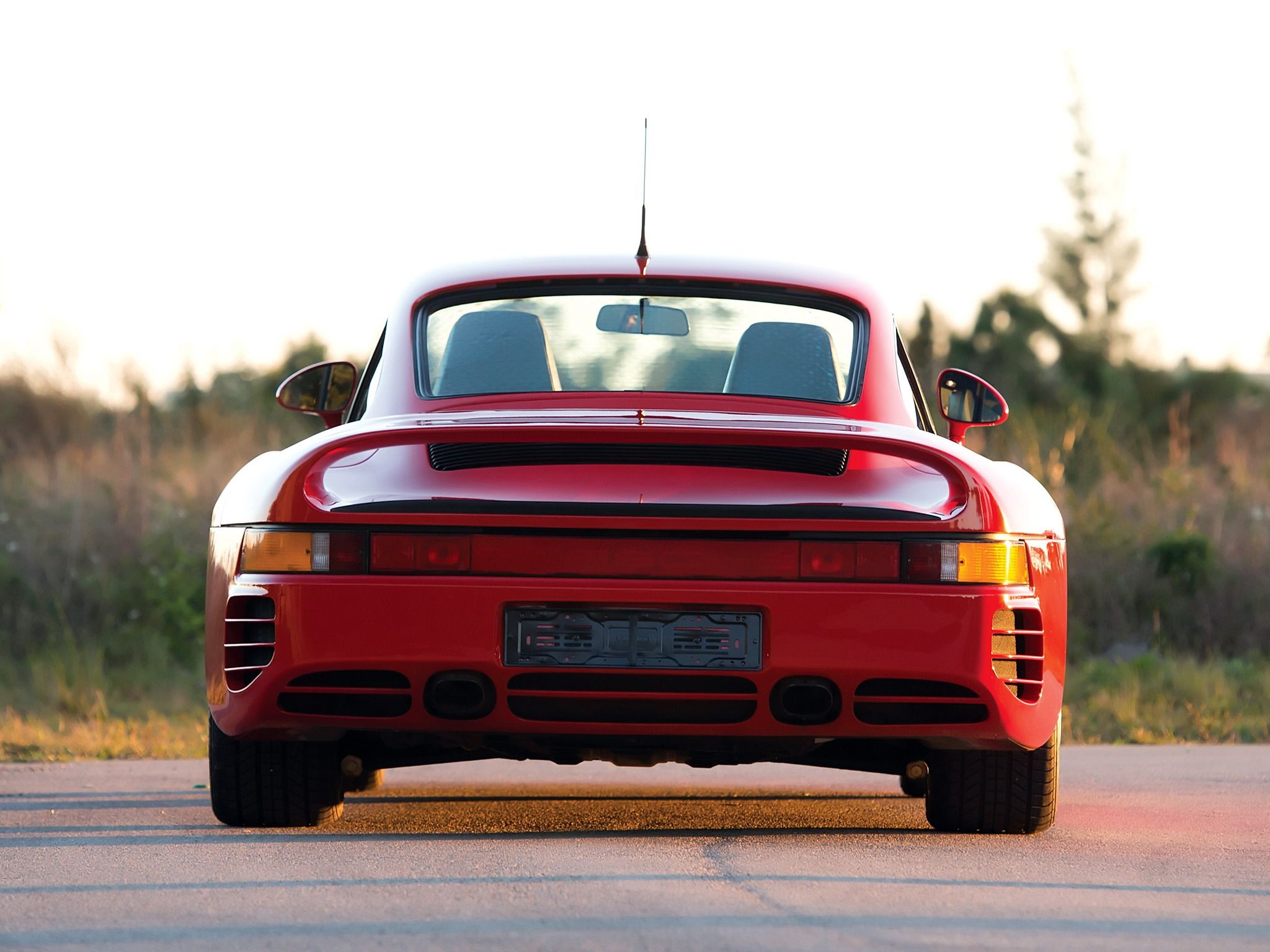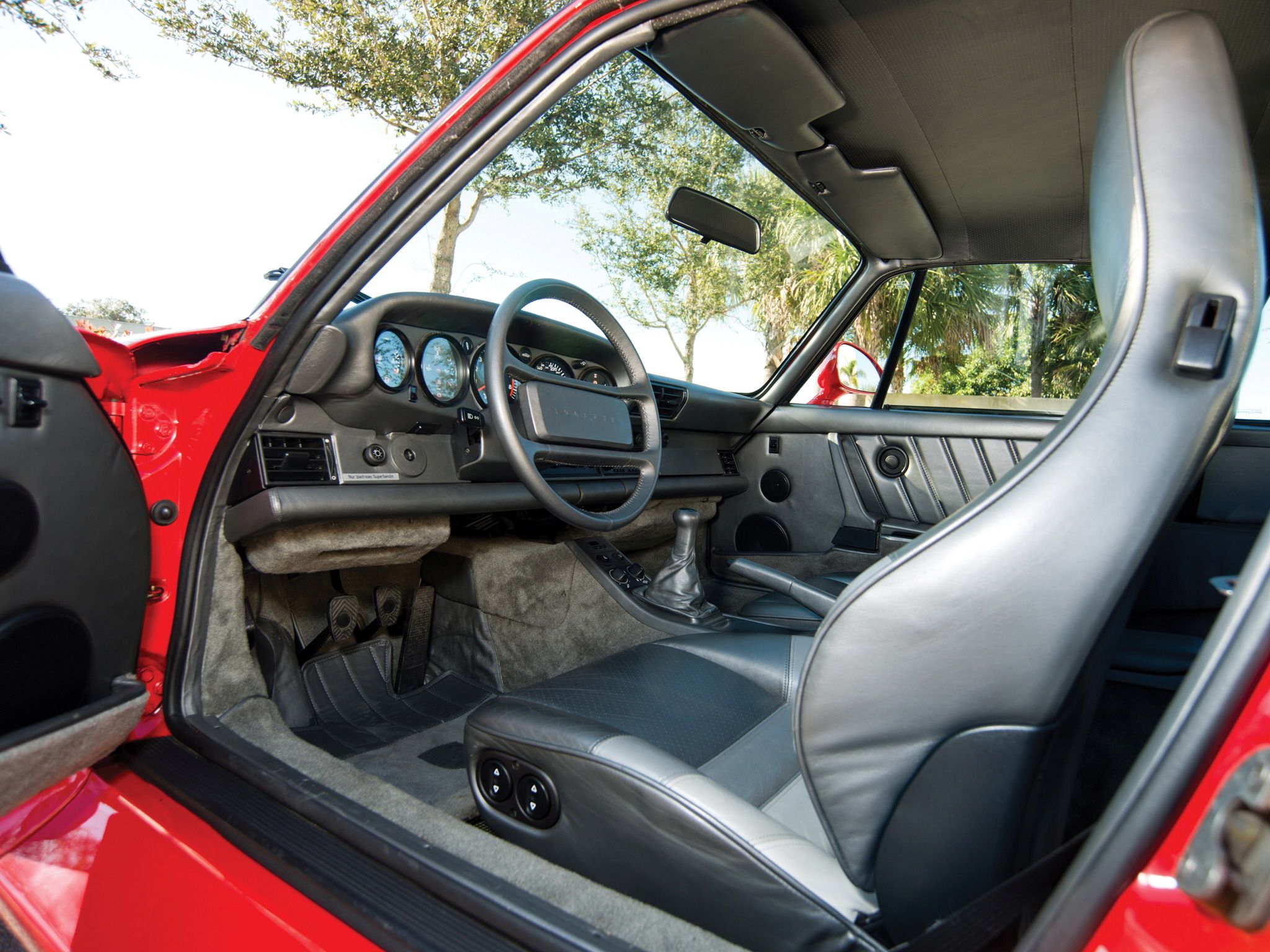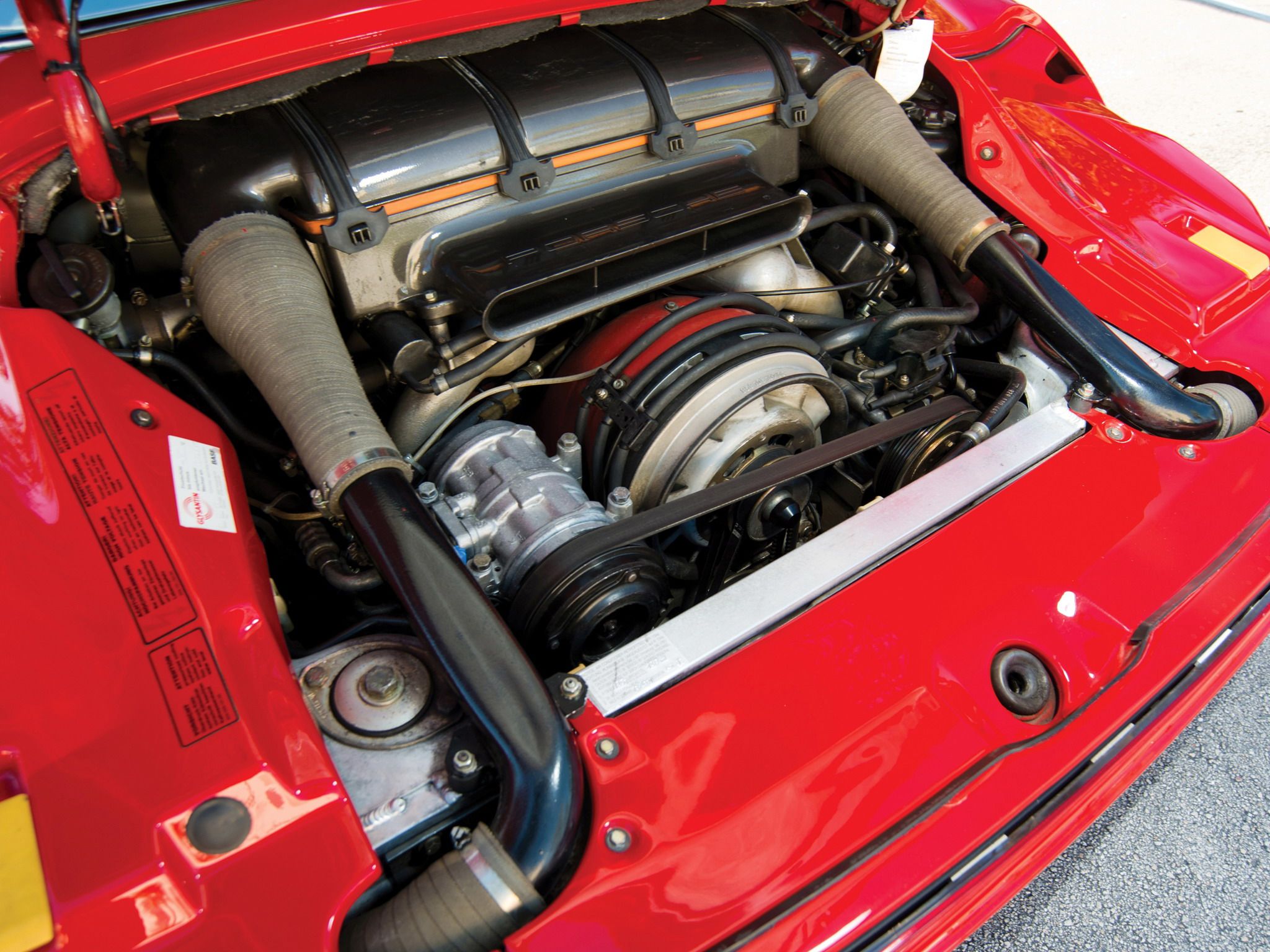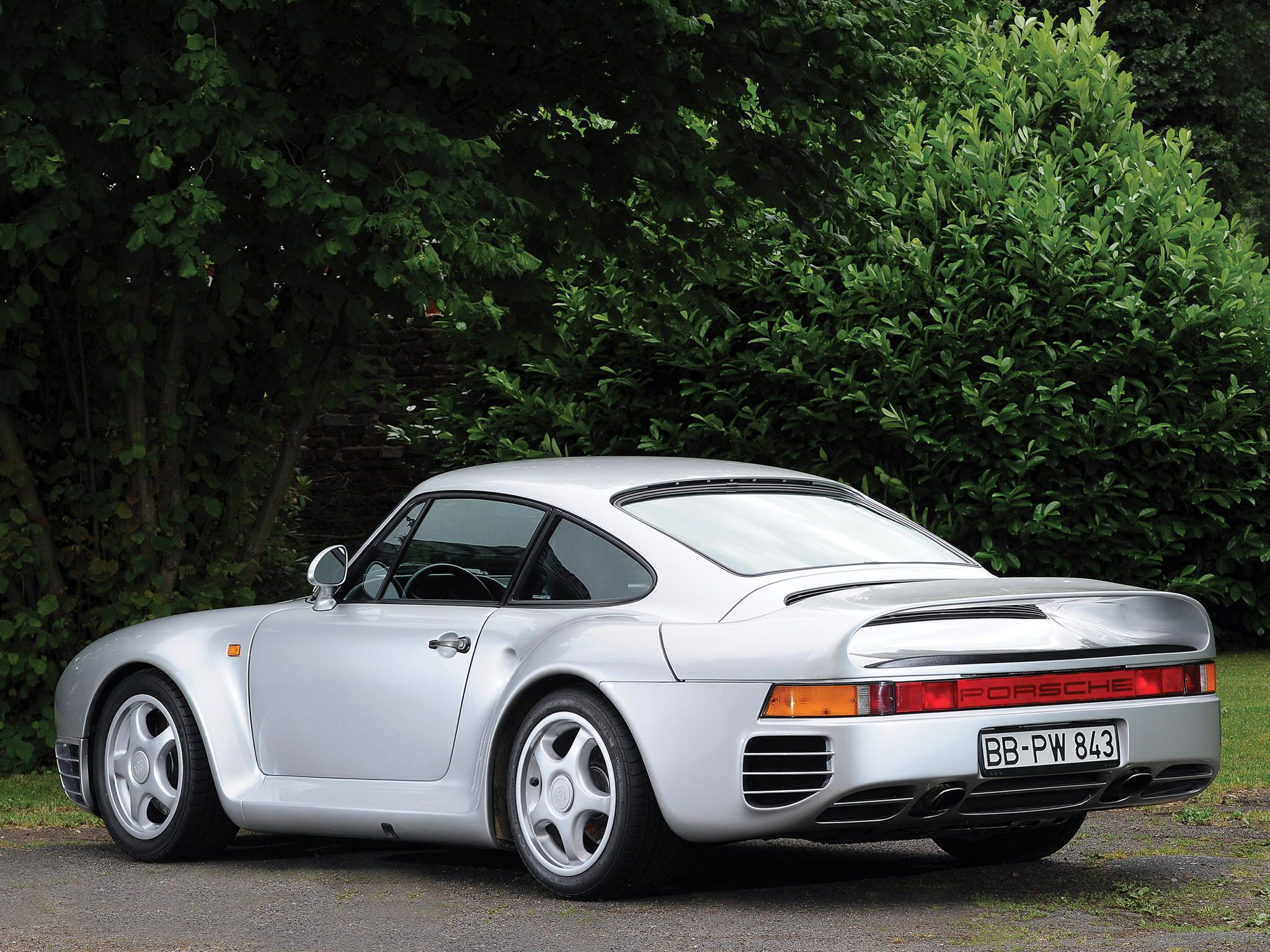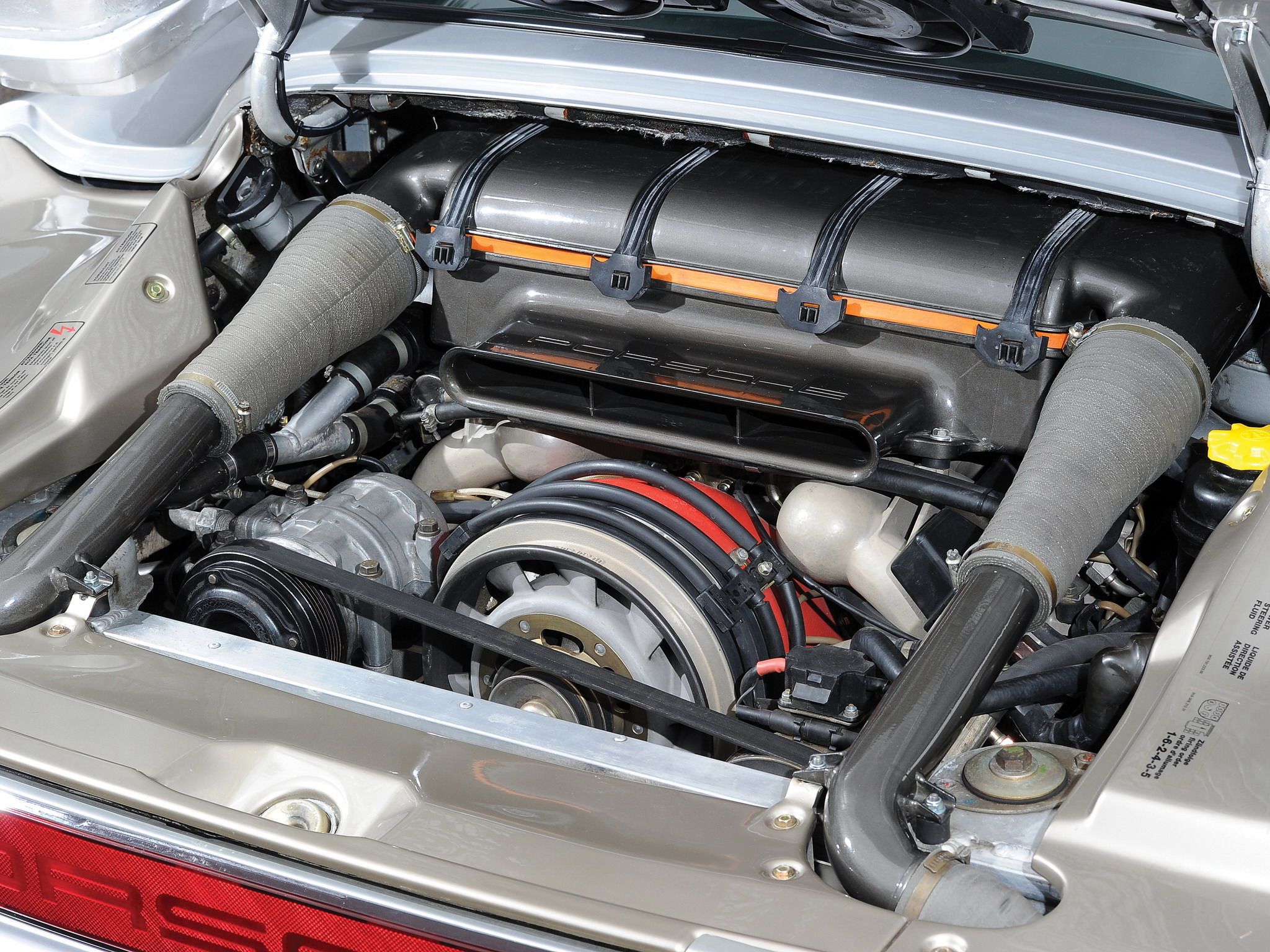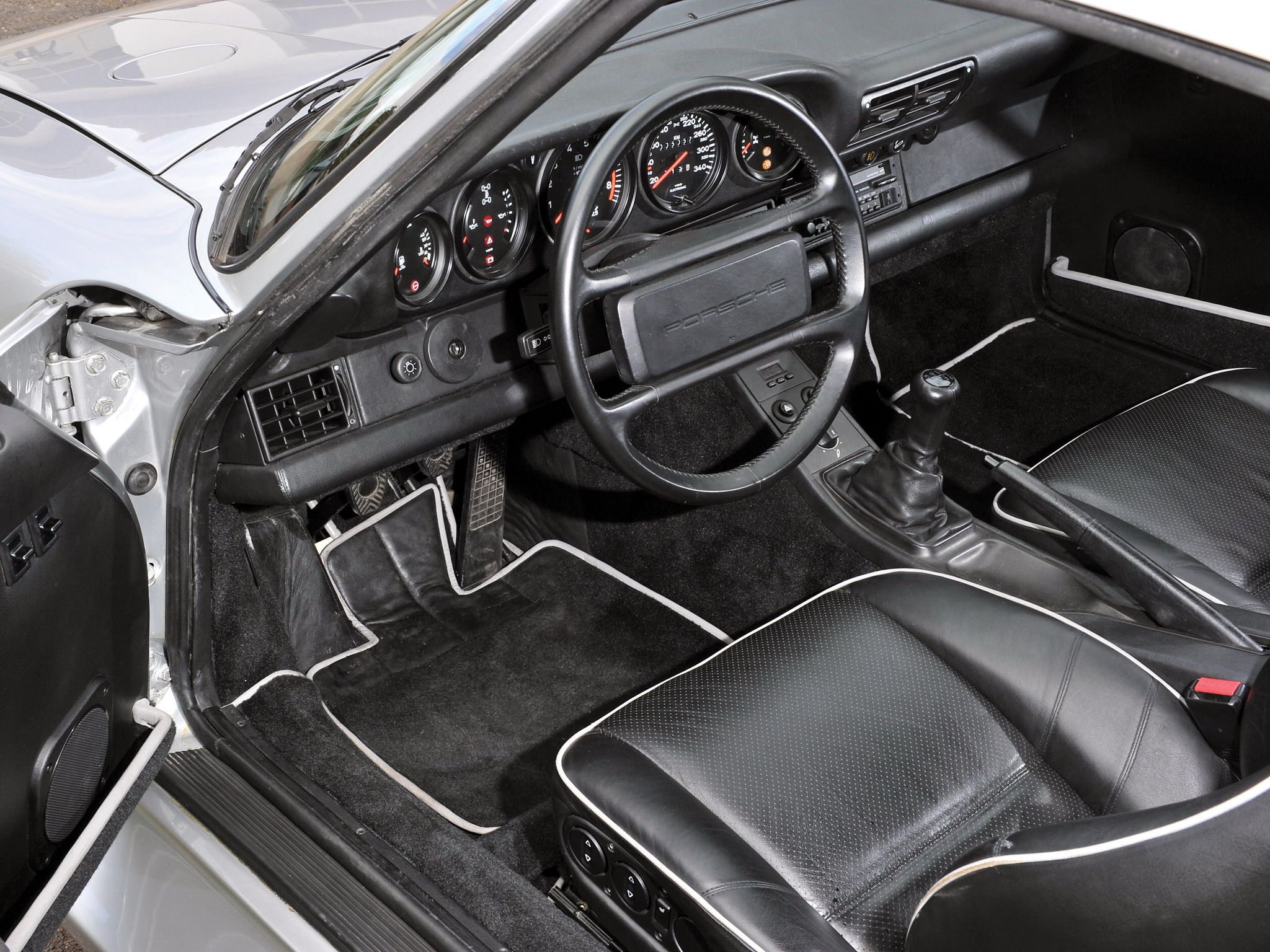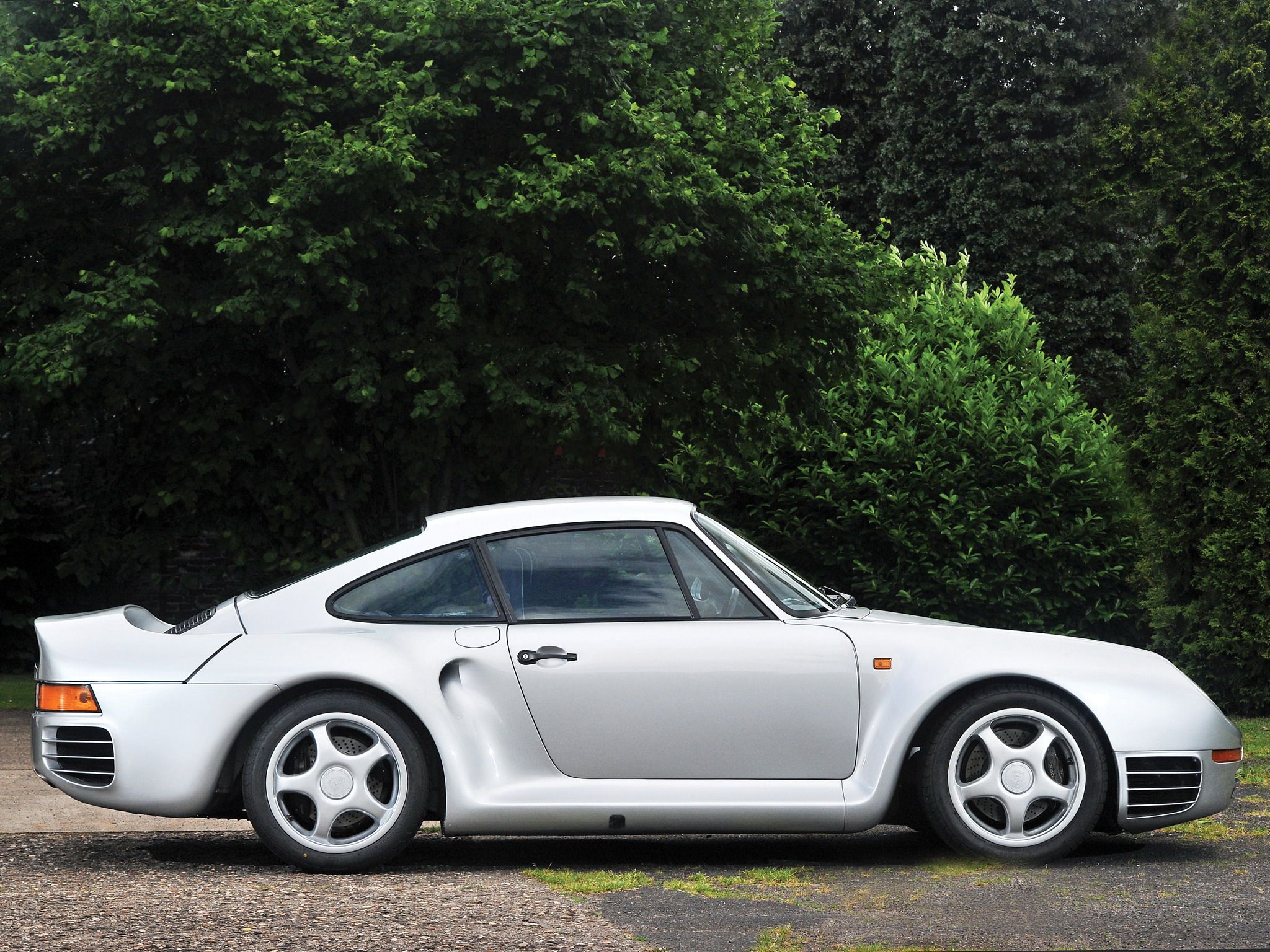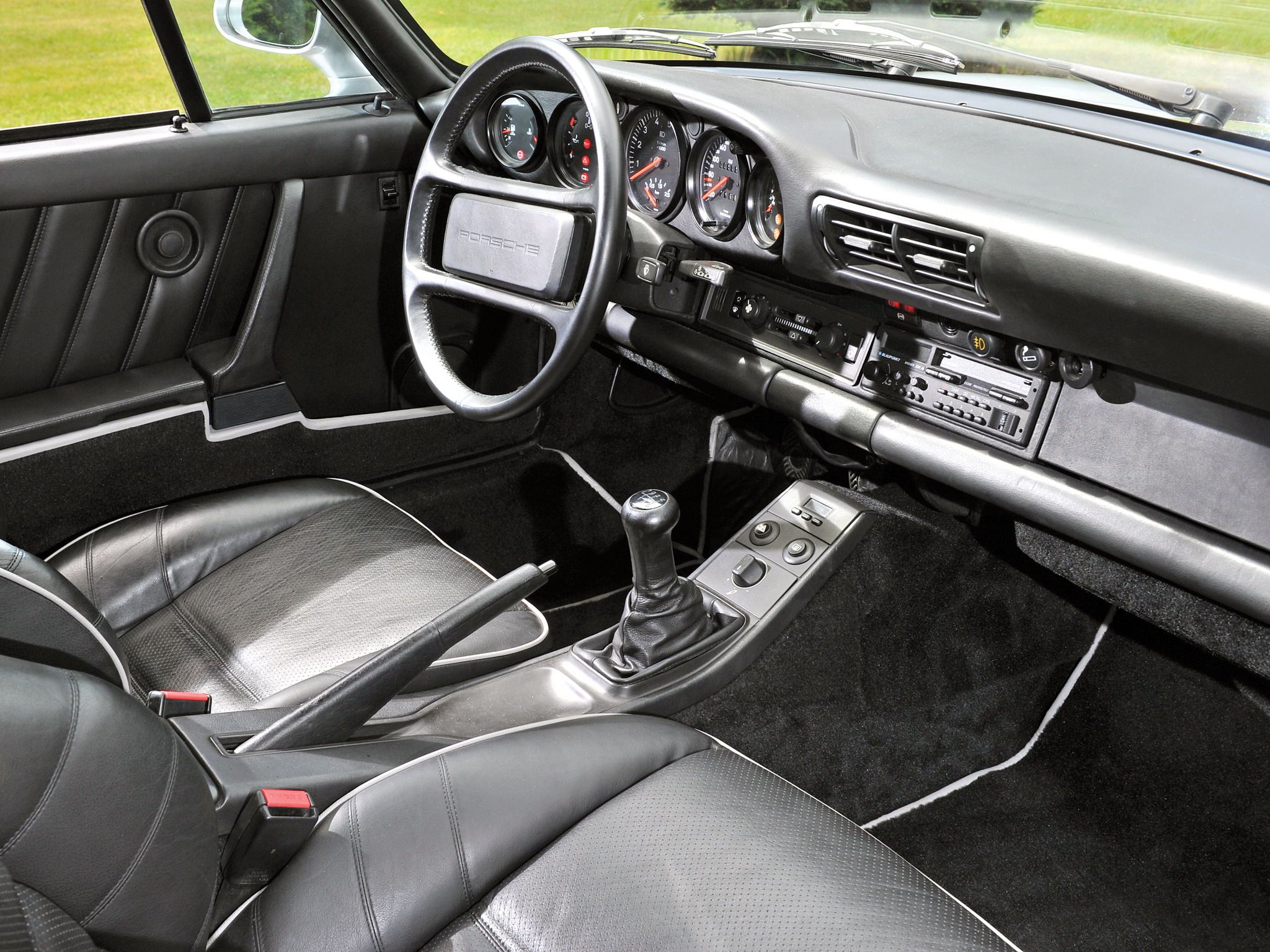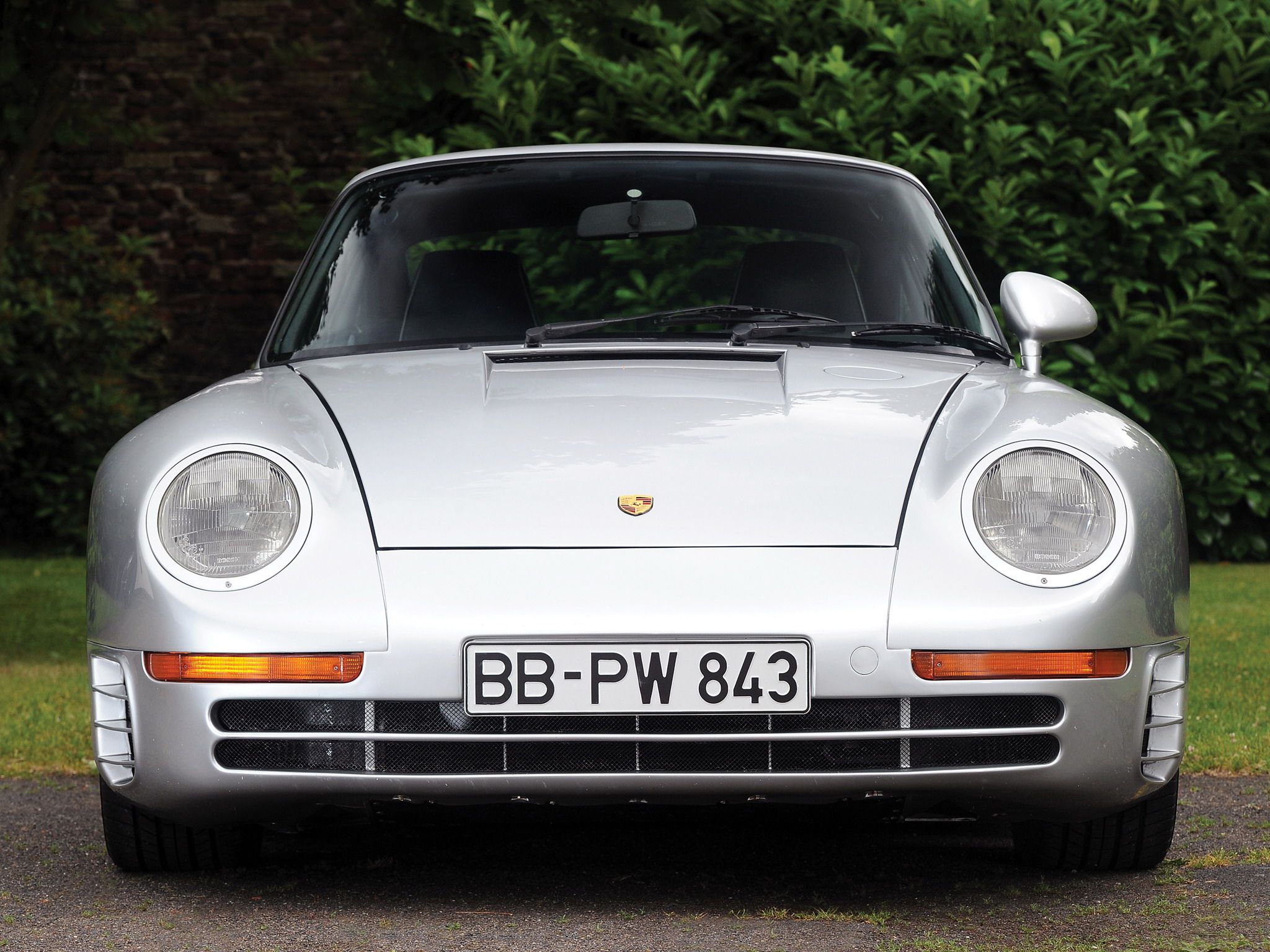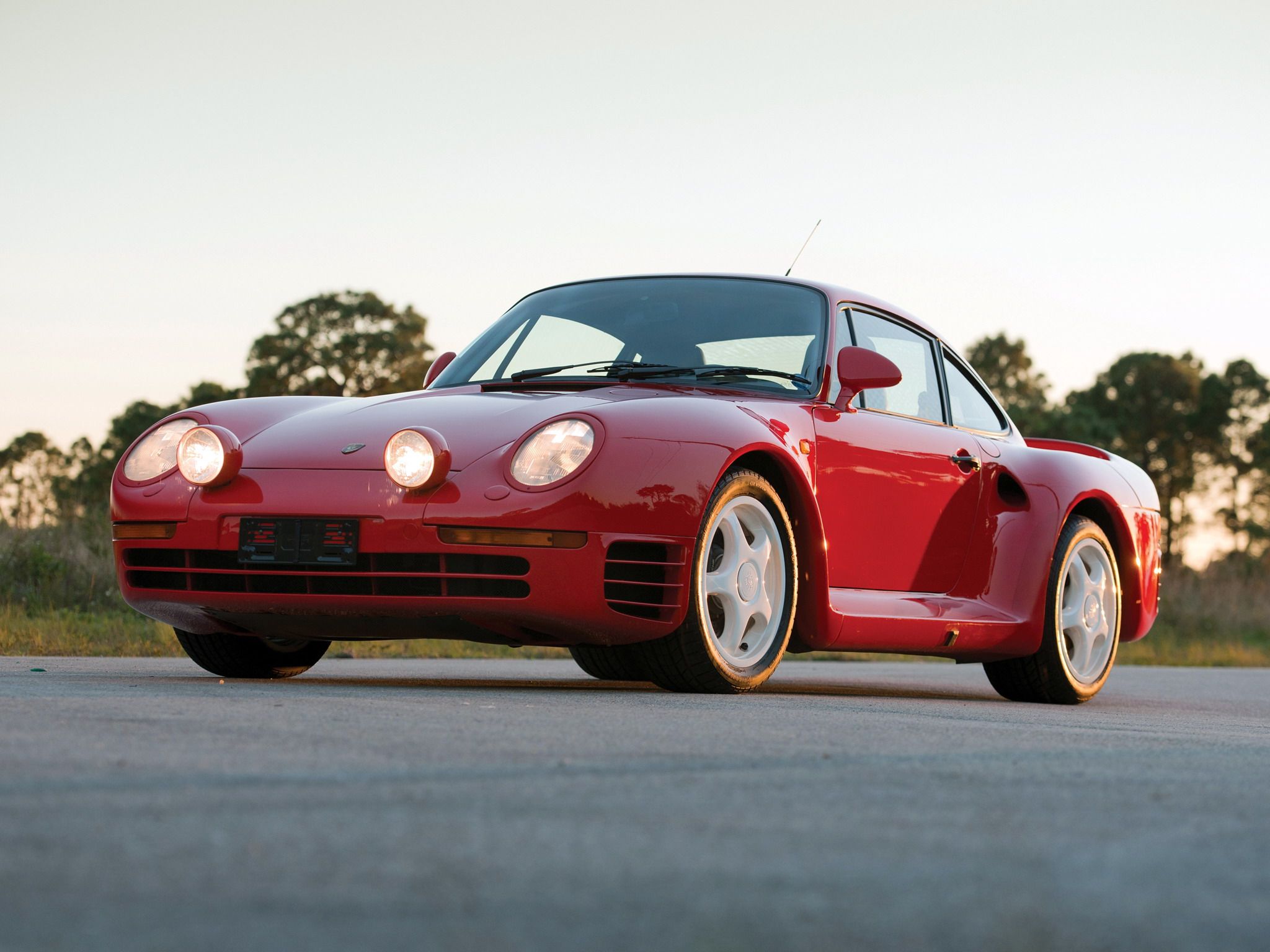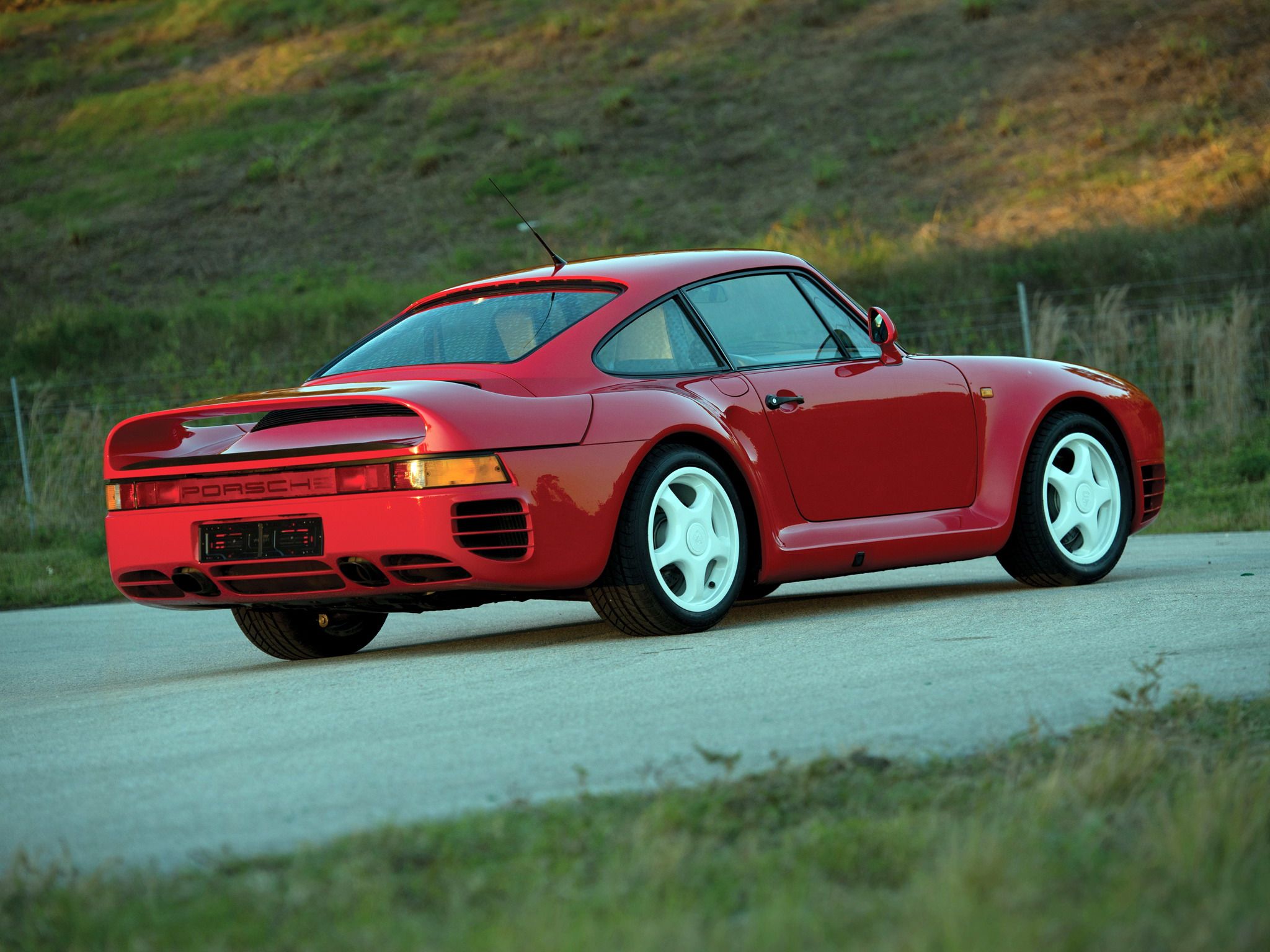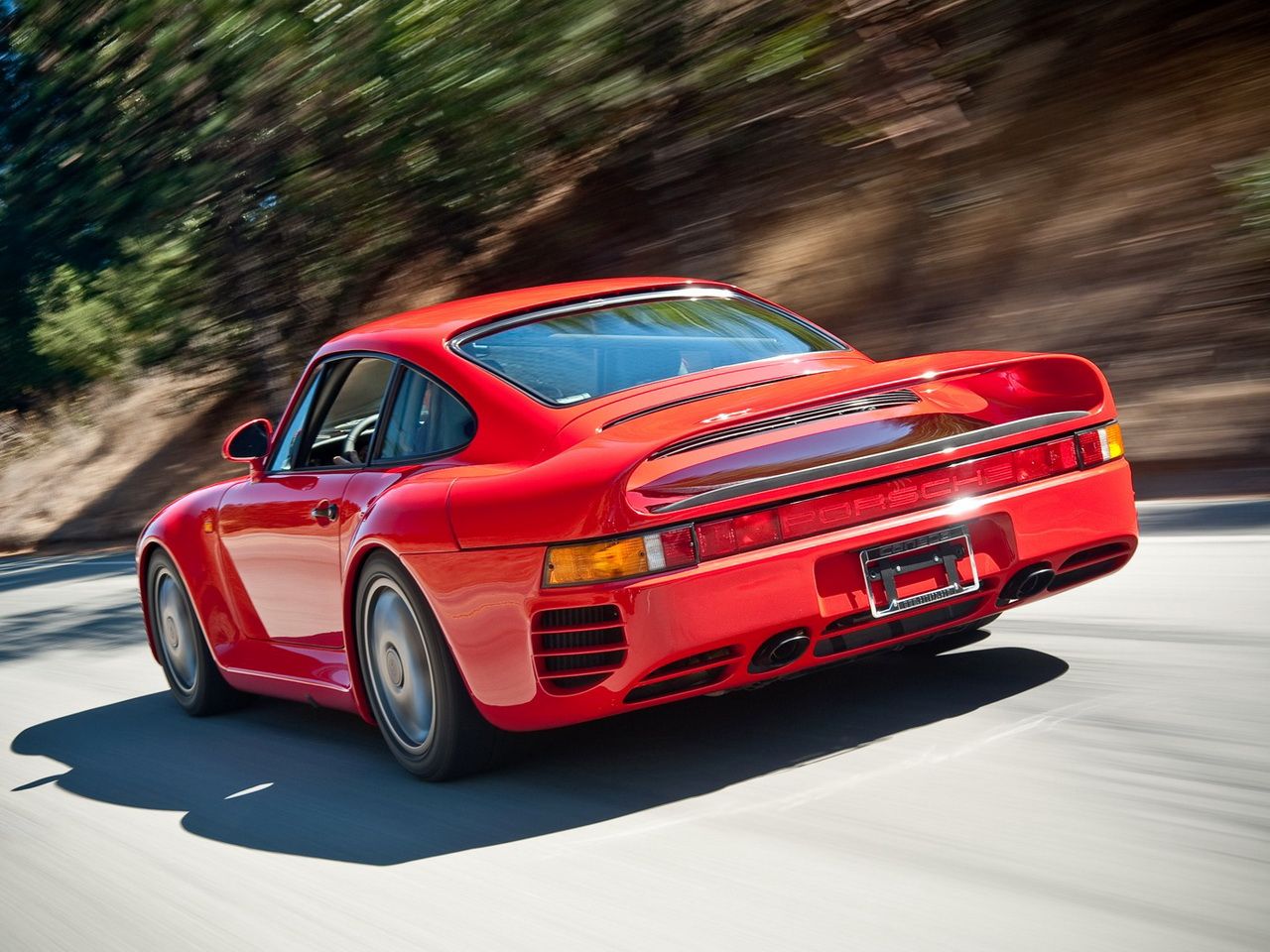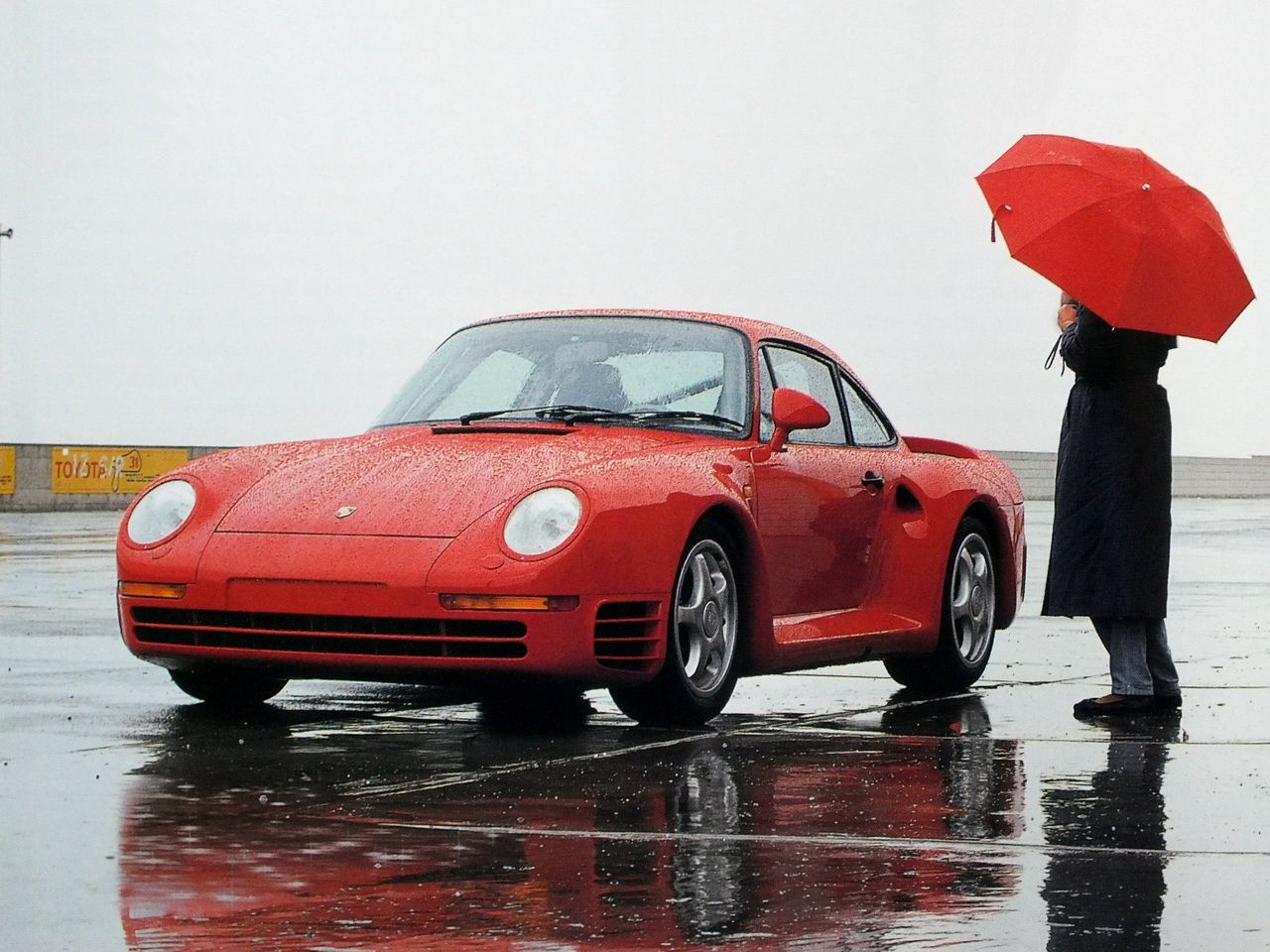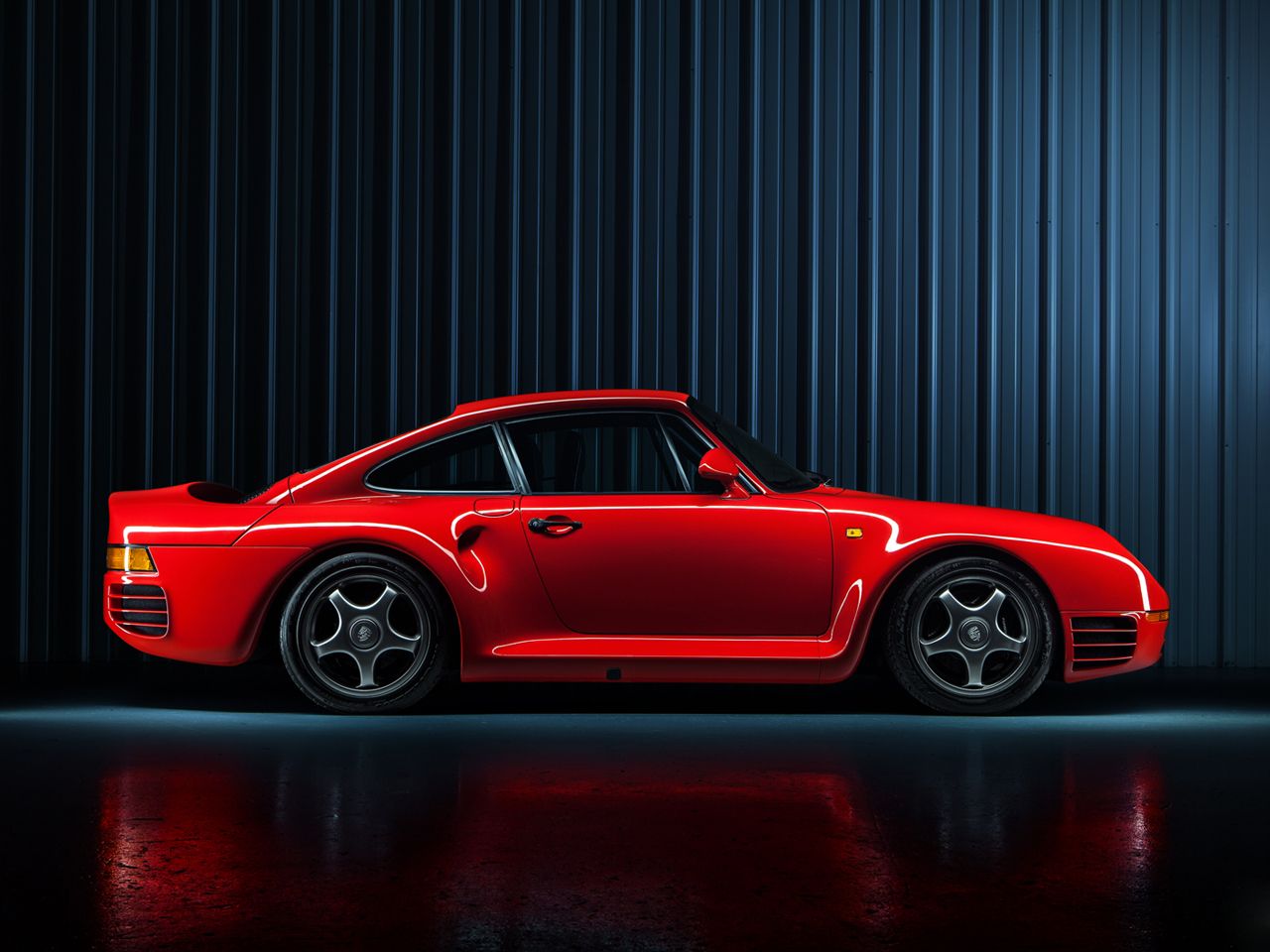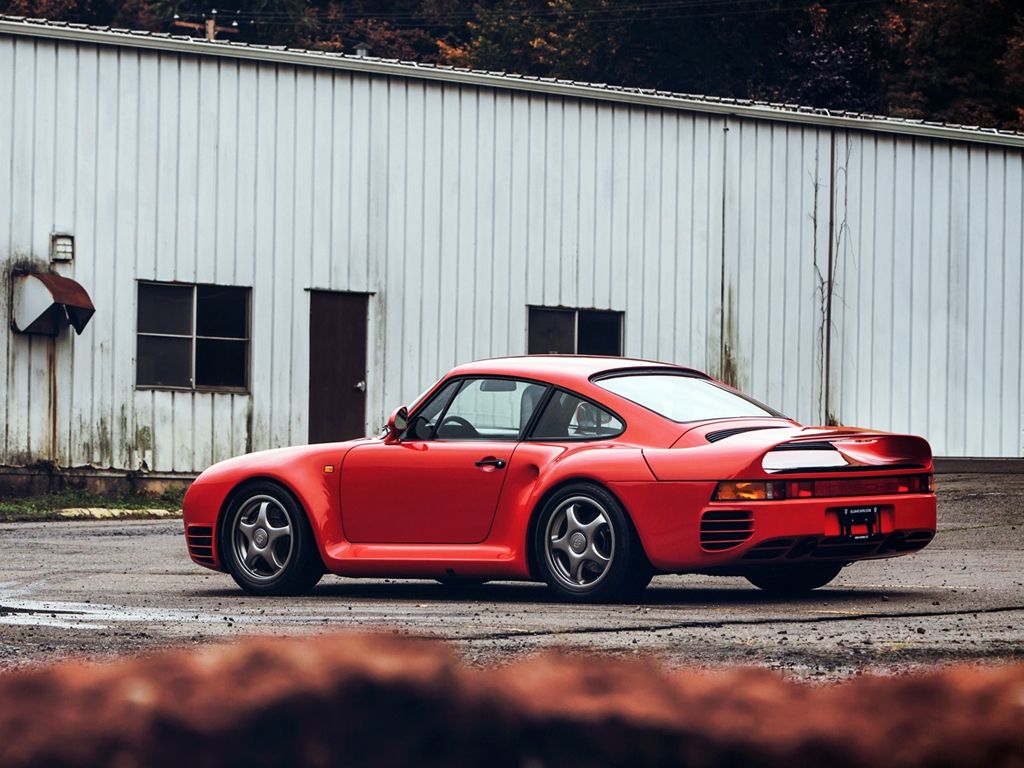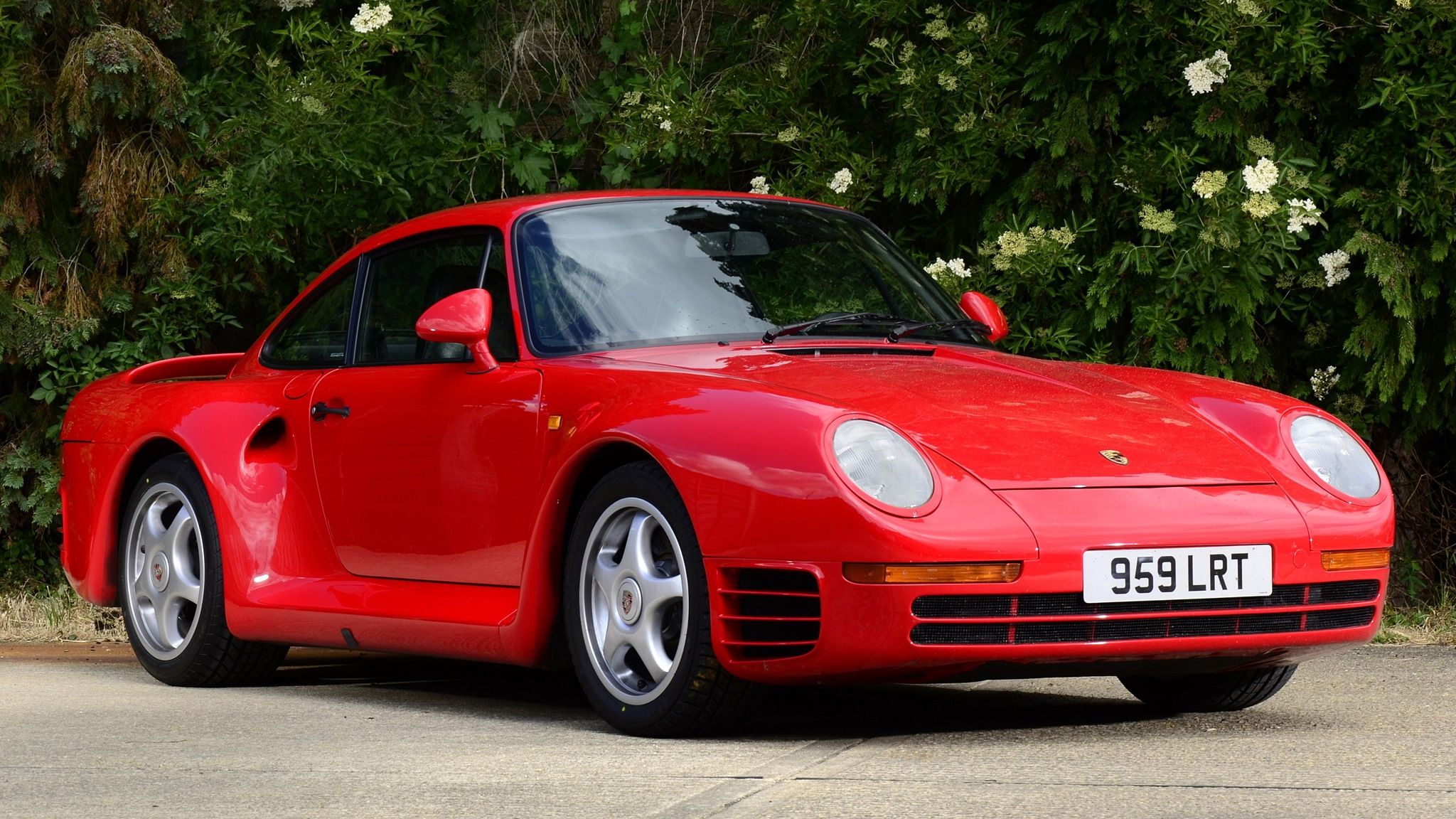In the 1980s the world was just coming off the gas-crunch of the `70s, and it had a taste for insanely fast machinery thanks to the Group B racing boom in rally and road cars. Porsche->ke1 decided it wanted to use the racing regulations as a test bed for future models, so it took a 911->ke282 and used it as a rough base to create the 959, one of the greatest cars the world had ever seen. Originally codenamed the Gruppe B, the 959 would make use of an incredibly advanced electronic all-wheel drive system, some of the most advanced body materials available in the world, and a whole host of electronic aids that set the blueprint for today’s supercars.->ke177 When the car finally hit showrooms in 1986, the Porsche 959->ke926 was the fastest street-legal car in the entire world.
While its bones are a 911 underneath, the 959 is a completely separate model of car that shares very little with its donor. The engine used a hybrid air- and water-cooled design, came with a pair of turbochargers, and it produced 444 horsepower. The 959 is the template for the modern supercar in almost every way. As a road car, it was the first to ship with tire pressure sensors, magnesium wheels (with hollow spokes no less), and an active differential. On top of all of its other accolades, it was also the first mass-produced car to come with a six-speed manual. Even today there are few cars on sale that can match the speed, pace and excitement provided by this incredible Porsche..
Continue reading to learn more about the Porsche 959
1986 - 1989 Porsche 959
- Make: Array
- Model: 1986 - 1989 Porsche 959
- Engine/Motor: flat-6
- Horsepower: 444 @ 6500
- Torque: 370 @ 5500
- Transmission: 6-Speed Manual
Exterior
Like most every Porsche ever created, the exterior design of the 959 looks a lot like a 911. It has that same roofline, thick hips and sloping nose that Porsche fans know and love, but the 959 is bigger and meaner in most every way. The nose is essentially a cheese grater with its collection of holes, vents and grilles. The body is several inches wider to make room for the wider track of the AWD system, and that tail is longer to make room for new cooling equipment and that big integrated spoiler. The aerodynamics were designed to create an air profile that was “zero-lift” making it very stable at speed. The body itself was constructed of several lightweight and advanced materials with aluminum, Kevlar and Nomex all incorporated. Curb weight rested at just under 3,200 pounds.
The original show car differed from the production car with new vents added in the front and rear wheel housing, and new intakes were added behind the doors.
Exterior Dimensions
|
Wheelbase |
2,272 MM (89.4 Inches) |
|
Length |
4,260 MM (168 Inches) |
|
Width |
1,840 MM (72 Inches) |
|
Height |
1,280 MM (50 Inches) |
|
Curb weight |
1,450 KG (3,200 LBS) |
Interior
In a change from the traditional supercar formula, Porsche fitted the interior of the 959 with an unprecedented level of standard luxury and equipment. While the rival Ferrari F40 arrived with bare-carbon floors and fixed racing seats, the 959 had leather seats, a radio, air conditioning, power windows and more. It was every bit as luxurious and usable as a 911, but with the power and speed to make it the benchmark of the world. By today’s standards the cabin is still fairly sparse, but with a six-speed manual (technically a first for a mass-produced car) and a whole host of switches and controls for the various electronics and systems in the car, driving the 959 was like piloting a space shuttle.
Drivetrain
This is where the 959 really gets interesting. The engine used by Porsche for the 959 was a lightly modified version of the engine the Porsche used in the “Moby Dick” racer as well as its Indy Car program. With a displacement of 2.9 liters (the engine is technically a 2.85-liter unit), the 959 was about a liter down compared to most 911s of the day. With the block, heads and pistons made from aluminum, combined with titanium connecting rods and a dry-sump oiling system, the engine was very light and very compact. This engine used an interesting dual-cooling solution that saw the cylinders stay cooled via air as all Porsches were, but the heads had water cooling. Equipped with a pair of sequential turbochargers, Porsche was able to push the horsepower of this motor up to 444 ponies with torque coming in at 369 pound-feet. Porsche used this sequential turbo setup, rather than the traditional usual turbo setup to improve responsiveness and cut lag.
Making sure this engine can get power to the road, Porsche created a new Porsche-Stuer Kupplung (PSK) all-wheel-drive system. Even today the PSK system is considered to be one of the most advanced ever made. Many modern systems can vary torque to various axles, but this alteration of torque only occurs when slippage occurs. The PSK system could vary power in normal running conditions regardless of wheel slip. While the system ran in a 40:60 configuration most of the time, as much as 80-percent of the power would be routed to the rear wheels under hard acceleration to make the most of the traction afforded by a rear-engine platform.
The system didn’t just rely on simple things like acceleration or tire slip to manage power either. It used several computers to calculate g-forces, throttle, steering angle and engine boost to properly regulate power. With the exception of being able to route power left or right, the PSK is every bit as sophisticated and effective as the AWD system found on a modern Nissan GT-R.
Taking care of the hand-off from engine to PSK was a new six-speed manual transmission. With the exception of a run of only 16 Alfa Romeo models in 1967, the 959 was the first mass produced car to use a six-speed manual transmission. The new transmission was created in partnership with Borg-Warner and it featured five standard forward gears as well as a special “G” gear for off-road driving.
When all was said and done, the Porsche 959 was good to hit the 62-mph mark from a dead stop in just 3.7 seconds. Even 100 mph rolled around in just 8.3 seconds. Top speed was a record setting 197 mph.
Drivetrain Specifications
|
Engine |
2849 cc Bi-turbocharged flat-6 |
|
Bore x stroke |
95.0 x 67.0 mm |
|
Compression ratio |
8.3:1 |
|
Horsepower (DIN) |
444 HP @ 6,500 RPM |
|
Torque |
370 LB-FT @ 5,500 RPM |
|
Fuel delivery |
elect. port injection |
|
Transmission |
6-speed manual |
|
0-60 mph |
3.7 seconds |
|
Top Speed |
197 mph |
Chassis and Suspension
Keeping the Porsche 959 properly planted on the road was a traditional double-wishbone setup in the front and back, but Porsche added an adjustable ride height and adjustable dampers to the mix. The ride height had three selectable settings; 4.7 inches (12 mm), 5.9-inches (15 mm) or 7.1 inches (18 mm). The standard height was 15 mm, but the car could be raised for off-road driving. Despite user selectable controls, the car would auto adjust height based on speed. Over 50 mph the car would sit at 15 mm for comfort and usability, and then over speeds of 100 mph the car would drop to its lowest setting to reduce drag and increase stability. The dampers also had three settings to adjust for either comfort or stiffness depending on use and need.
To help the 959 come to a stop quickly, it was fitted with the largest set of brakes Porsche had put on a production car. The rotors where 12.6-inhces up front and 12.1-inches in the rear. These rotors where ventilated and cross-drilled to improve performance. All four tires were clamped by aluminum, four-piston calipers and the car was fitted with ABS as well, another first for a supercar.
The tires were the only part of the car that didn’t defy logic. Rather than massive tires like those found on the Ferrari F40 or Lamborghini Countach, Porsche fitted a relatively modest set of 255-series rubber under the wide rear fenders of the 959. The tires were still fancy, even if they weren’t large. They employed special run-flat technology and Porsche claimed they would be good for up to 50-miles of moderate-speed driving when flat.
The alloy wheels used on the car were made of magnesium, a first for a production car, and they featured tire pressure sensors and hollow spokes, two more firsts to add to the list. The hollow spokes allowed for more air volume in the tire and helped to better spread the pressure load out across the tires in all conditions.
Pricing
For the time, the Porsche 959 was an incredibly expensive machine with a price of around $225,000. Evan at that price Porsche was losing money as it’s estimated that each 959 cost about $500,000 to manufacture. Today it will cost you much more money to take home a 959. In August a 1988 959 Komfort, one of the most common models, sold for nearly $1.5 million at Monterey.
Competition
Ferrari F40
When the Porsche 959 was launched, it had no true competition in the marketplace, but that would change less than a year later when Ferrari introduced the F40. Built to celebrate the 40th anniversary of the Italian company, the F40 was the last car to receive the seal of approval from Enzo Ferrari himself before his death. Where the 959 focused on technological efficiency to provide speed and handling, the F40 focused on simplicity and feel. The F40 was the first car to be completely made from carbon fiber, so it had an unbelievably low curb weight. To ensure this weigh advantage wasn’t spoiled by anything else the F40 came with no real interior to speak of. The door panels used what was essentially a length of string as a door handle, there were no carpets, no radio and no air conditioning. Even the windows were made of plastic to cut weight further. Final weight came in around 2,400 pounds.
When you consider that the twin-turbocharged, 2.9-liter V-8 hiding behind the front seats produced 478 horsepower and 425 pounds of twist, the F40’s zero-to-60 time of 3.9 seconds seems a little conservative. The F40 would actually hit 125 mph in a matter of 9 seconds. Top speed was a record-setting, and 959-beating, 201 mph.
If the Porsche 959 is a laser-guided table saw, the F40 is the equivalent of a massive hammer. The result is that the 959 may be the car that set the benchmark for all supercars in production today, but the Ferrari F40 is the car that all supercars wish they could be.
Conclusion
The Porsche 959 is easily one of the most impressive cars ever created by man. Even today, 30 years after its creation we are just now making million-dollar hyper cars that match its performance and technology. The simple fact that the German company was able to produce such an impressive machine so many years ago boggles the mind. Adjustable suspension, high-strung turbocharged engine, advanced torque-vectoring AWD; if you love the McLaren P1, Porsche 918, Ferrari F12berlinetta or basically any supercar built in the last 20 years, you owe a debt of gratitude to the mighty 959. All hail the king, all bow to the original.


